- March 18, 2024


9th Annual Singapore OpenGov Leadership Forum 2024, 14 - 15 May 2024 - CLICK HERE FOR DETAILS
We are creating some awesome events for you. kindly bear with us., strengthening disaster resilience and preparedness in the philippines.
- Aineena Hani
- October 1, 2021

- Odnoklassniki
- Facebook Messenger
- LiveJournal
The Philippines is one of the world’s most vulnerable countries to natural disasters. Natural disasters are increasing the social and economic costs in the country as a result of population growth, changing land-use patterns, migration, unplanned urbanisation, environmental degradation, and global climate change. Reducing the risk of disasters will be critical to achieving the Philippines’ development goals.
In terms of population exposure and vulnerability to hazards, the Philippines ranks among the top three countries in the world. Over the course of their long history of dealing with disasters, the Philippine government has developed strong defence strategies. Nonetheless, significant gaps in disaster management capacities persist across the Philippines, and surprisingly little data on local levels of disaster resilience and preparedness are available.
At least 60% of the country’s total land area, nearly 300,000 square kilometres (116,000 square miles), is prone to natural disasters, owing in large part to the archipelago’s location along the path of tropical storms brewing in the western Pacific as well as the Ring of Fire.
The Department of Science and Technology-Philippine Institute of Volcanology and Seismology (DOST-Phivolcs) has inaugurated its Mindanao Cluster Monitoring Centre for Earthquake and Tsunami to address disaster resilience and preparedness initiatives in the Philippines. According to the Phivolcs Director, the newly built Mindanao Cluster Monitoring Centre will improve the country’s earthquake detection capability.
PMCMCET is located in Mintal, Davao City, inside the Southern Mindanao Campus of the Philippine Science High School (PSHS). According to Phivolcs, the cluster centre also manages the earthquake and tsunami monitoring stations on Mindanao, which include nine staff-controlled seismic stations, 18 satellite-telemetered seismic stations, 12 sea-level detection stations, and tsunami alerting stations.
Although Phivolcs has a data receiving centre in Quezon City, Solidum believes that establishing earthquake detection facilities in other parts of the country would ensure service continuity, particularly during disasters.
“If there is a large earthquake in Metro Manila, it (other facilities) would help us ensure that the office is still operating. It is an initial step to ensure continuity of service,” the Phivolcs Director said. Establishing the PMCMCET is also said to be helpful in case of large earthquake events in Luzon, the Visayas, and Mindanao on the same day.
Furthermore, an engineer in the Philippines recently introduced the Seismic Isolator, a game-changing solution for protecting the country’s buildings from earthquakes. Given that the Philippines is located on the Pacific Ring of Fire and is prone to earthquakes, the anti-seismic device could assist in mitigating and preventing much more damage if another ground-shaking event occurs.
The Seismic Isolator is an anti-seismic device that helps ensure that a building sustains no damage in the event of an earthquake. Its goal is to protect the building from damaging ground movement by allowing it to slide along with it. Because damaging earthquake movements are horizontal rather than vertical, a building equipped with seismic isolators will simply sway rather than vibrate back and forth in varying directions as a result of inertial forces, causing deformation and damage.
In addition, the Philippines government also established its National Disaster Risk Reduction and Management Plan (NDRRMP), which was followed by the Philippines’ National Disaster Risk Reduction and Management Council, which is the relevant peak body and includes cabinet-level heads of each major government department, as well as permanent representatives from civil society, the Philippines Red Cross, and the private sector. This is significant because non-governmental actors play a critical role in fostering community, regional, and national resilience.
The NDRRMP is in line with the National Disaster Risk Reduction and Management Framework (NDRRMF), which provides the primary guide for the country’s disaster risk reduction and management (DRRM) efforts. The Framework envisions a country of safer, more adaptable, and disaster-resilient Filipino communities working toward long-term development.
- Share on LinkedIn
- Share on Facebook
ASEAN Regional CERT: Fortifying Cybersecurity Collaboration
- Alita Sharon

The Cyber Security Agency of Singapore (CSA) is dedicated to securing Singapore’s cyberspace to support national security, power the digital economy, and protect the digital way of life. To reinforce national security, CSA continually monitors cyber threats, defends critical information infrastructure (CII), and implements mitigation measures to safeguard essential services.
The Singapore Cyber Emergency Response Team (SingCERT) responds to cybersecurity incidents for its Singapore constituents. It was set up to facilitate the detection, resolution and prevention of cybersecurity-related incidents on the Internet.
Singapore, represented by the CSA has been working closely with ASEAN Member States (AMS) to establish the ASEAN Regional Computer Emergency Response Team (CERT) to promote and facilitate information-sharing related to cyber incident response, and to complement the operational efforts by individual national CERTs in each AMS.
Singapore had made the recommendation for a single AMS to host the ASEAN Regional CERT and proposed to host and fund its physical activities in Singapore at the 14th ASEAN Network Security Action Council in August 2023.

The ASEAN Regional CERT will enable stronger regional cybersecurity incident response coordination and critical information infrastructure (CII) protection cooperation, including for cross-border CII such as banking and finance, communications, aviation and maritime.
The 4th ASEAN Digital Ministers Meeting (ADGMIN) convened in Singapore in February, to address the multifaceted challenges and opportunities in the digital realm, particularly amid the ongoing COVID-19 pandemic.
The meeting recognised advancements in implementing the ASEAN Digital Masterplan 2025 (ADM 2025) despite the pandemic and stressed the need for a robust and inclusive digital ecosystem. The ADM 2025 Mid-Term Review (MTR) assessed progress in key areas including trusted digital services, consumer protection, and broadband infrastructure
The meeting highlighted the need to set governance standards for emerging technologies like AI, based on recommendations from the ADM 2025 MTR. It also emphasised the importance of collaborating on digital infrastructure and fostering trust among users for secure data sharing.
The endorsement of the ASEAN Guide on AI Governance and Ethics marked a significant milestone, reflecting the region’s commitment to harnessing AI technologies responsibly. The guide, which includes practical use cases for trustworthy AI deployment, is poised to serve as a valuable tool for promoting the responsible and ethical utilisation of AI solutions across ASEAN.
Additionally, the meeting welcomed initiatives aimed at enhancing regional cybersecurity capabilities, such as the establishment of the ASEAN Regional CERT. This initiative is expected to bolster incident response capabilities and facilitate timely information sharing and best practice exchange among ASEAN member states.
Moreover, the meeting acknowledged the importance of data governance and privacy protection in fostering digital trust. Efforts to promote the adoption of the ASEAN Model Contractual Clauses and facilitate seamless data transfers between ASEAN and the European Union were commended as significant steps towards enhancing regional data governance frameworks.
The meeting also highlighted the significance of digital infrastructure development, including the advancement of 5G networks and the establishment of frameworks to facilitate cross-border data flows, particularly in areas such as disaster management and logistics for rural areas.
In the realm of international cooperation, the meeting affirmed ASEAN’s commitment to deepening collaboration with dialogue and development partners, including China, Japan, the Republic of Korea, India, the United States, the European Union, ITU, and APT. These partnerships are crucial for advancing digital transformation, cybersecurity, and capacity-building efforts across the region.
Overall, the 4th ADGMIN underscored the collective resolve of ASEAN member states to navigate the evolving digital landscape, fostering innovation, inclusivity, and resilience to realise the full potential of the digital economy for the benefit of all stakeholders.
Following the endorsement of the financial model, Singapore will continue to work closely with AMS to operationalise the ASEAN Regional CERT to enhance collective cybersecurity within the region.
India’s Tech Development Board Advances FMCG Digital Innovation
- Samaya Dharmaraj

In a significant stride towards fostering digital innovation within in the Fast-Moving Consumer Goods (FMCG) sector, the Technology Development Board (TDB) has joined hands with a Delhi-based company in a strategic agreement. Under this collaboration, TDB has approved a Conditional Grant of ₹1.22 crores (approximately US$162,000) to support its groundbreaking project titled “Digital Financial Solutions for Last Mile FMCG Value Chains in Emerging Markets”.

The initiative has been facilitated through the ‘INDIA-ISRAEL INDUSTRIAL R&D AND TECHNOLOGICAL INNOVATION FUND (I4F)’. Spearheaded by a company from Israel, the project sets out to revolutionise last-mile FMCG value chains in emerging markets through the implementation of cutting-edge digital finance solutions.
This partnership underscores the robust technological cooperation between India and Israel, highlighting their joint commitment to driving innovation in industrial research and development.
At its core, the project focuses on developing an integrated digital finance platform tailored specifically for last-mile FMCG value chains. Leveraging the Delhi company’s expertise in human-centred design, the project places a strong emphasis on enhancing user experience and ensuring alignment with diverse consumer needs. With a prestigious client portfolio that includes industry giants, the company brings invaluable insight and innovation to the project.
Upon completion, the platform is poised to seamlessly embed financial services across FMCG value chains, with particular attention to enhancing last-mile distribution networks. Drawing from the Delhi company’s extensive experience in managing branchless banking networks and B2B commerce platforms, the project aims to empower businesses and consumers alike, driving financial inclusion and fostering sustainable economic growth in emerging markets.
Speaking on the significance of this partnership, the Secretary of the Technology Development Board, stressed its pivotal role in addressing real-world challenges through innovation-driven solutions. As the inaugural agreement signed under the Bilateral India-Israel call, the initiative lays the groundwork for future collaborations.
Moreover, it signifies a commitment to transformative agreements that will drive progress and innovation in the near future. This partnership stands as evidence of technological advancement and cooperation between India and Israel, poised to deliver tangible benefits to both nations and beyond.
India is recognised as a burgeoning powerhouse in the global technology and digital space, with a commitment to innovation and leadership that extends beyond its borders. As the world witnesses an increasingly interconnected digital landscape, India is keen to leverage its expertise and resources to collaborate internationally.
OpenGov Asia highlighted the Indo-French Joint Committee of Science and Technology’s (JCST) recent meeting, emphasizing the efficacy of the Indo-French Centre for the Promotion of Advanced Research (CEFIPRA) in boosting collaboration. Talks centred on advancing research in key areas such as Interdisciplinary Cyber-Physical Systems (ICPS), health, clean energy, artificial intelligence (AI), quantum technologies, and advanced materials.
Emphasising the significance of fostering connections among innovators and entrepreneurs from both nations, the meeting underscored the importance of leveraging collaborative efforts for mutual benefit. Dr Claire Giry, Director General for Research and Innovation at the French Ministry of Higher Education and Research echoed these sentiments, stressing the need to reinforce ties between researchers from India and France, with a specific focus on sustainable technologies, applied mathematics, health, and ocean research.
With a commitment to inclusive and sustainable development, India’s endeavours in the tech and digital space aim not only to drive economic growth but also to empower communities worldwide, cementing its position as a beacon of technological leadership and cooperation on the international stage.
Through partnerships, knowledge exchange, and collaborative initiatives, India seeks to not only showcase its technological prowess but also to extend a helping hand internationally. By fostering innovation, promoting digital inclusion, and championing technological solutions to global challenges, India aims to demonstrate leadership in the tech arena while making meaningful contributions to the international community.
Indonesia: Exploring Remote Sensing Technology
- Azizah Saffa
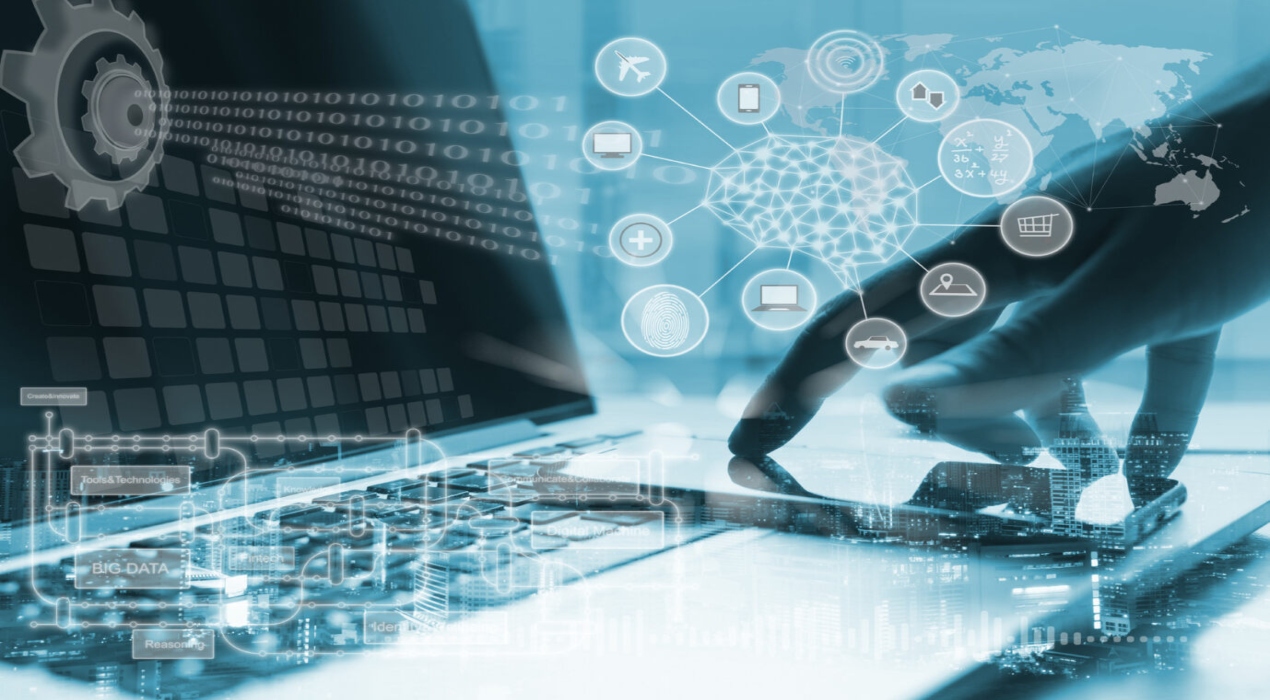
A collaboration between the Postgraduate School of Geological Engineering at Bandung Institute of Technology (ITB), the Geological Engineering Student Association “GEA” (HMTG “GEA”), and the Indonesian Association of Geologists (IAGI) recently showcased the advancements in sensing technology at a seminar entitled “Remote Sensing Technology for Exploration, Inventory, and Management of Natural Resources in Indonesia”.
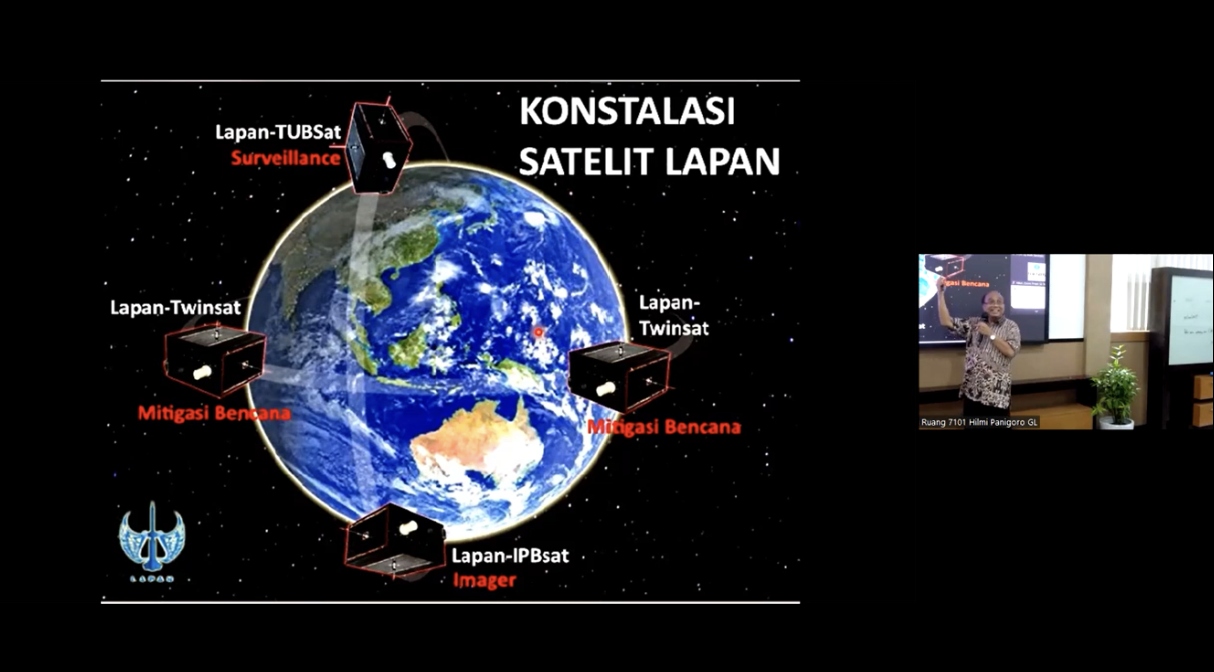
Led by Professor Dr Ir. Indroyono Soesilo, M.Sc., the seminar highlighted remote sensing’s pivotal role in a data-driven and tech-enabled world. It has become an indispensable tool in the scientific field, providing researchers and practitioners with valuable data and previously unattainable insights.
As humanity transitions into the “imagination society” of era 5.0, remote sensing emerges as a crucial tool in providing information and knowledge to address contemporary and future challenges, underlining its significance in digital transformation and problem-solving endeavours. Its continued development and integration into various industries promise to revolutionise further how humans interact with and understand the world.
According to Prof Indroyono, remote sensing is observing an object without direct contact using specialised sensors mounted on various platforms such as drones, aircraft, satellites, etc. Multiple sensors used for remote sensing operate at different wavelengths, ranging from visible light, infrared, and radar to seismic waves, providing flexibility in obtaining data needed for geology.
Since its inception in 1960 with NASA’s TIROS-1 project, remote sensing technology has undergone significant evolution, transitioning into a service-oriented industry in Indonesia by 1993. This transformation has been propelled by government support and infrastructure development efforts. The trajectory of remote sensing underscores its vital role in facilitating Indonesia’s exploration, inventorying, and management of natural resources.
The evolution of remote sensing technology is evident from the launch of the first satellite platform in 1960 to the subsequent deployment of Landsat-1, an earth monitoring satellite, 12 years later. Prof. Indroyono and other professionals have played a pivotal role in Indonesia’s remote sensing advancement, leveraging their international educational backgrounds. Initially, their focus was on fostering Indonesia’s remote sensing service sector, encompassing data providers, information service providers, knowledge service providers, and initiatives for market expansion.
Currently, many high-resolution satellites are used for commercial purposes. The images of the earth produced by these satellites are also real-time and directly collected in the extensive data system for inventory, monitoring, analysis, and prediction purposes.
In a previous article, OpenGovAsia reported that Indonesia was deploying remote sensing to estimate oil palm productivity using satellite imagery from Sentinel-2. The National Research and Innovation Agency (BRIN) established a collaborative remote sensing research project with Lamandau Polytechnic from Lamandau Regency, Central Kalimantan.
Through remote sensing data, this research collaboration aims to establish a comprehensive understanding and accurate prediction of oil palm productivity in Bulik District, Lamandau Regency. Furthermore, remote sensing has also been used for conservation , explicitly focusing on monitoring water quality and addressing marine waste. Plastic and other waste materials discharged into the oceans pose severe global challenges.
Prof. Indroyono stresses the necessity of strengthening regulations to ensure the ethical use of remote sensing technology, despite its industry’s current robustness in adhering to rules. He advocates for continuous research and development efforts to maintain competitiveness, stressing the importance of exploring new sensor technologies and refining data processing techniques. Additionally, he underscores the pivotal role of collaboration between government, industry, and academia in driving innovation and addressing challenges in remote sensing technology and applications.
While significant progress has been made, Prof. Indroyono believes there is still untapped potential in the remote sensing industry. By bolstering regulatory frameworks, investing in R&D, and fostering collaboration among stakeholders, the industry can continue its growth trajectory and realise its full potential in the years ahead.
Expanding Innovation: HKSTP’s Alliances in the Middle East
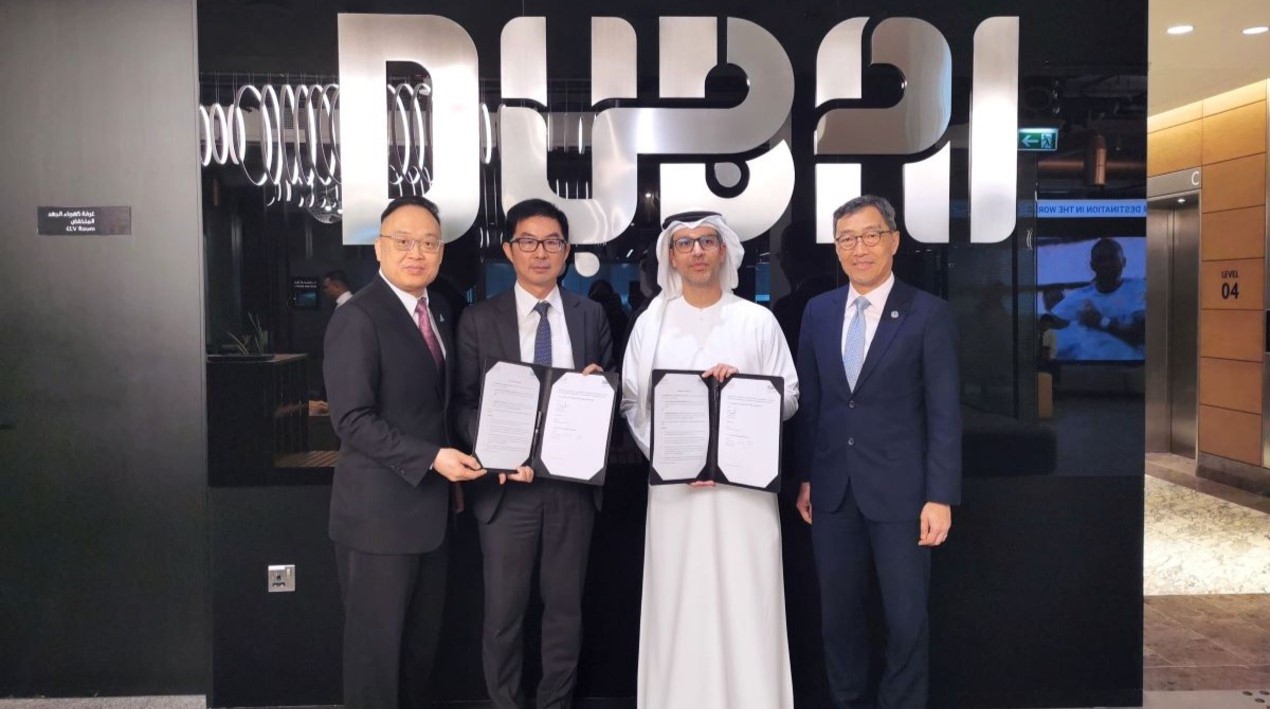
In a strategic move to bolster innovation and technology (I&T) ecosystems , the Hong Kong Science and Technology Parks Corporation (HKSTP) recently concluded an impactful visit to the Middle East, solidifying various strategic partnerships across Saudi Arabia, Qatar, and the UAE. This landmark initiative aimed to reinforce the world-class I&T ecosystems of both Hong Kong and the Middle East, leveraging digital advancements to propel global progress and collaboration.

Led by Professor Sun Dong, the Secretary for Innovation, Technology, and Industry, the delegation comprised representatives from eight park companies, showcasing Hong Kong’s prowess in innovation at the prestigious LEAP 2024 event.
These partnerships mark significant milestones in HKSTP’s mission to cultivate a truly global innovation community, seizing opportunities for multilateral technology collaborations and fostering cross-border innovation networks.
Among the standout achievements was Halo Energy Limited (Halo), a leading provider of electric vehicle (EV) charging solutions, securing two major partnerships in the UAE and Qatar. These strategic collaborations aim to explore opportunities for EV charging deployment and investment in the Middle East, laying the groundwork for sustainable transportation solutions in the region and driving the adoption of clean energy technologies.
A biotech company, a subsidiary of an HKSTP park company, inked a trilateral agreement with the Dubai Economic Development Corporation and another HK business. This partnership will expand the biotech research and development (R&D) footprint in the UAE, focusing on advancements in human and veterinary diagnostics and lab testing.
The collaboration underscores the commitment to technology exchange and innovation-driven solutions, fostering a dynamic ecosystem for biotech and green tech investments in the Middle East.
Furthermore, a pioneer in smart building solutions forged a strategic partnership with a Dubai-based company. This collaboration aims to promote energy-saving and green building solutions, with plans to implement its innovative platform in 100 commercial buildings across the region over the next 18 months. By harnessing the power of digital technologies, the partnership seeks to drive sustainable urban development and enhance the efficiency of built environments in the Middle East.
Albert Wong, CEO of HKSTP, emphasised the transformative potential of these partnerships in propelling both regions into a new era of innovation and collaboration. The strategic MoU signed with the King Abdulaziz City for Science and Technology (KACST) in Riyadh, Saudi Arabia, represents a pivotal step towards technology exchange and startup support between the two ecosystems, fostering an environment conducive to groundbreaking initiatives in technology and industry practices.
The delegation also explored strategic partnerships with another group, facilitating startups’ market expansion efforts in the Middle East, and engaged with leading innovation hubs such as Masdar City, Hub 71 in Abu Dhabi, and the Sharjah Research Technology and Innovation Park (SRTIP). These interactions fostered discussions on fostering innovative ecosystems and promoting collaboration across government, industry, and academia to drive research and development initiatives in key sectors.
HKSTP was optimistic after showcasing its vibrant I&T ecosystem at the Hong Kong Pavilion during LEAP 2024 in Riyadh, Saudi Arabia. With meaningful synergies anticipated between the two regions, the event provided a platform for HKSTP to highlight Hong Kong’s technological strengths and solidify its position as a gateway to the Greater Bay Area. T
Through demonstrations by eight Science Park tech ventures and a panel discussion moderated by CEO Mr Albert Wong, the event aimed to uncover new commercial opportunities and foster international partnerships for a prosperous I&T future.
The HKSTP’s Middle East delegation exemplifies the power of international collaboration in driving digital transformation and innovation. By forging strategic partnerships and fostering cross-border innovation networks, HKSTP is at the forefront of propelling global progress and shaping a future where technology transcends borders to address complex challenges and unlock new opportunities for all.
DOST’s SETUP Empowers MSMEs in Cotabato

In the heart of Kidapawan City, Cotabato Province, the Department of Science and Technology (DOST) is spearheading a transformative initiative poised to revolutionise the landscape of micro, small, and medium enterprises (MSMEs) in the Soccsksargen region. Through its Small Enterprise Technology Upgrading Programme (SETUP), DOST emphasises the pivotal role of technology and innovation in enhancing the efficiency and competitiveness of local businesses.
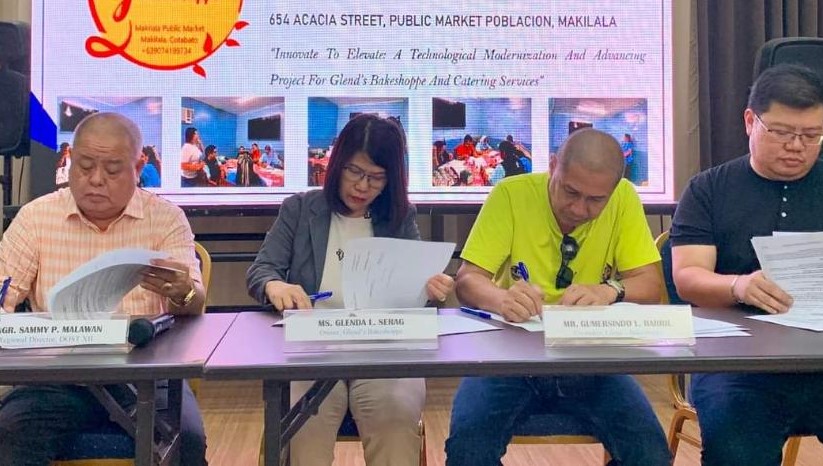
In a significant stride towards bolstering the operational efficiency and competitiveness of products and services for MSMEs in Cotabato, DOST recently greenlit the implementation of the SETUP programme. This strategic move aims to empower local enterprises through innovation funds allocated for machinery upgrades, setting the stage for transformative growth and development.
Michael Ty Mayo, the Provincial Director of DOST in Cotabato, underscores the programme’s fundamental mission: to leverage science and technology as catalysts for the growth and development of small and medium-sized enterprises nationwide.
“It helps increase production, improve product quality, and encourage innovation to make local industries more competitive in the global market,” explains Mayo, highlighting the programme’s multifaceted benefits for MSMEs.
Among the esteemed recipients of the SETUP programme’s innovation funds are trailblazing enterprises. These visionary entrepreneurs represent the vanguard of technological advancement, poised to harness the power of science and technology to drive business growth and innovation.
For the visionary owner of communications, networking and data solutions, the SETUP programme heralds a new era of opportunity and growth for local SMEs. Pagaduan’s enterprise specialises in systems integration, connectivity, and public safety solutions, offering a diverse range of services encompassing telecommunications, network design, structured cabling systems, and more. With the infusion of innovation funds, he is optimistic about the transformative impact on his business and the broader local economy.
Similarly, the proprietor of a bakery and catering services company lauds DOST’s programme as a vital mechanism for enhancing operational capability and productivity. As an accredited partner of the DOST-Food and Nutrition Research Institute, the outlet plays a pivotal role in producing nutribuns and supplying the feeding programme of the Department of Education.
The owner Serag recognises the pivotal role of technology and innovation in driving business growth and sustainability, underscoring the importance of the SETUP programme in fostering a conducive environment for MSMEs to thrive.
The decisive support for DOST’s initiative extends beyond the entrepreneurial sphere, with the provincial government of Cotabato expressing unwavering support for the intensified implementation of the programme. Moreover, DOST has garnered staunch backing from the congressional offices of the second and third districts of the province, underscoring the collaborative efforts to drive technological innovation and economic growth.
As DOST Regional Director Sammy Malawan reaffirms, the SETUP programme represents a beacon of hope and opportunity for MSMEs, offering unwavering support and guidance in navigating the complexities of technological advancement. With a steadfast commitment to promoting science, technology, and innovation as driving agents of success, DOST stands poised to propel MSMEs towards a brighter, more prosperous future.
At the forefront of the Philippines’ digital transformation, the Department of Science and Technology drives progress and innovation. Through its dedication to technology and digital literacy, DOST empowers businesses, cities, and citizens, enabling them to excel in today’s tech-driven world. A case in point is the impactful work of a DOST scholar, whose innovative applications are propelling Borongan’s evolution into Eastern Visayas’ smart city.
Through various initiatives, DOST plays a pivotal role in bridging the digital divide and ensuring equitable access to technology and digital resources across the nation. By promoting digital literacy courses and providing training opportunities, DOST equips individuals with the knowledge and skills needed to harness the power of technology for personal and professional advancement.
Fiscal Discipline: Thailand’s Digital Government Initiative

A Memorandum of Understanding (MoU) spearheaded by Miss Apinphon Ankkakamonset, Deputy Director of the Digital Government Office, that aims to bolster the financial discipline of local government organisations through a transparency and accountability-focused programme, aligning with governmental policies and digital guidelines was signed between the Office of the Auditor General of Thailand, the Department of Local Administration.

It supports the Office of the Auditor General of Thailand in its unwavering commitment to innovation in auditing. Recognising the transformative potential of digital technologies, the DGA actively encourages local administrative organisations nationwide to register their agency’s email addresses to gain easy access to the programme. This initiative is designed to empower local administrative organisations to conduct preliminary self-assessments related to budget setting and disbursement, ultimately bolstering their digital government capabilities.
Mr Montien Charoenphon, Deputy Governor of the Auditor General of Thailand, highlighted the importance of supporting personnel of local government organisations in maintaining fiscal discipline. The Office of the Auditor General’s long-term national audit policy focuses on developing local government organisations to ensure transparent budget spending, which aligns with the national strategy on public administration development and the Constitution of the Kingdom of Thailand.
The State Audit Office has developed a web application to strengthen fiscal discipline, which can be accessed conveniently from anywhere and on any device. This application allows local administrative organisations to conduct self-assessments related to budget setting and disbursement for various projects, promoting transparency and accountability in financial management.
Mr Anutin Charnvirakul, Deputy Prime Minister and Minister of Interior emphasised the importance of local government organisations in providing public services and solving problems at the regional level. The Department of Local Administration fully supports local government organisations using the financial and fiscal discipline strengthening programme to assess their operations and enhance standards in maintaining fiscal discipline.
The MoU signed between the Office of the Auditor General of Thailand, and the Department of Local Administration represents a collaborative effort to promote good governance and enhance the efficiency of local government organisations through digital technology. This initiative will improve financial discipline and strengthen the overall governance system, benefiting the country and its people.
Further, this partnership reflects the government’s commitment to leveraging digital technology to improve public administration and service delivery. By encouraging local administrative organisations to register their email addresses for the programme, the DGA is facilitating the adoption of digital tools to streamline operations and enhance accountability.
The web application developed by the State Audit Office represents a significant step forward in state auditing. Its user-friendly interface and accessibility from any device make it a valuable resource for local administrative organisations seeking to improve their financial management practices. By providing a framework for self-assessment, the application empowers these organisations to identify areas for improvement and take proactive measures to enhance their fiscal discipline.
The emphasis on transparency and accountability in financial management is crucial for ensuring the effective use of public funds. By promoting these principles through the MOU and digital tools, the government is working to build trust with the public and demonstrate its commitment to responsible governance.
The Department of Local Administration’s support for the programme further underscores the importance of collaboration between government agencies in achieving common goals. By working together, these agencies can leverage their expertise and resources to drive meaningful change and improve the quality of public services.
The signing of the MoU represents a positive development in Thailand’s efforts to enhance its digital government capabilities and promote good governance. It is a testament to the government’s commitment to leveraging technology to benefit its citizens and improve public administration’s efficiency and effectiveness.
Regulations for Internet Resource Management in Vietnam
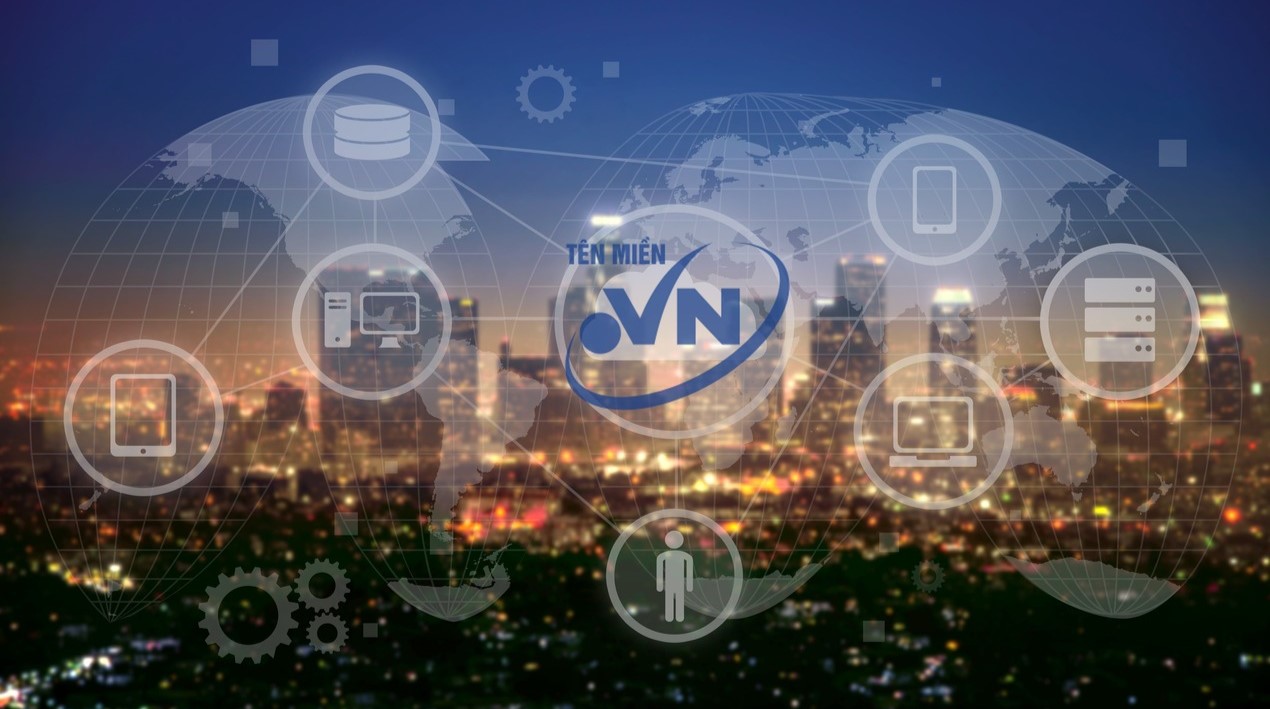
The Ministry of Information and Communications (MIC) in Vietnam has recently put forward a series of proposed regulations aimed at managing internet resources , notably the national domain name “.vn”.
These regulations, outlined in a draft decree detailing provisions of the Telecommunications Law, seek to streamline processes related to the transfer of ownership, including donations, contributions of capital, and inheritance of usage rights for the “.vn” domain. By aligning these procedures with existing property rights laws and relevant regulations, the MIC aims to ensure transparency and legal compliance in the management of digital assets.
Under the proposed regulations, individuals and organisations must promptly update “.vn” domain registration details in cases of ownership changes due to donations, capital contributions, or inheritance rights. Entities involved in activities like restructuring or capital transactions leading to domain ownership changes must also adjust registrant details accordingly.
A crucial component of these regulations involves enforcing the revision of registrant information for domain names when undergoing changes such as organisational restructuring, name adjustments, or modifications in functions and responsibilities.
These stipulations are designed to uphold the accuracy and currency of records concerning domain ownership and utilisation rights.
The proposed regulations also address the circumstances under which “.vn” domain names may be revoked, including instances where they are used against the state, pose national security risks, violate laws, or fail to meet maintenance fee obligations.
To ensure transparency and provide adequate notice, the MIC will notify affected parties of impending revocations through various channels, including direct communication, mass media, text messages, and websites, with a minimum three-month advance notice period.
In cases of resource revocation, the MIC pledges to compensate affected individuals and organisations using funds from the State Budget. Compensation levels are determined based on factors such as the remaining maintenance fees for directly allocated or granted resources and the auction-winning amount for resources acquired through auctions.
According to statistics from the Vietnam Internet Network Information Centre (VNNIC), Vietnam currently hosts ten domestic and six foreign domain name registrars. The country boasts over 604,000 registered “.vn” domain names, with nearly 19,000 domain name transfers recorded by the end of last December.
The MIC’s proposed regulations signal a proactive approach to internet resource management, aiming to ensure compliance, transparency, and accountability in Vietnam’s digital landscape.
Furthermore, the proposed regulations prioritise the protection of Internet resources related to national sovereignty and security, ensuring that agencies, organisations, and socio-political entities receive preferential treatment in resource allocation and management. These measures underscore the government’s commitment to safeguarding national interests in cyberspace.
In addition to the regulations governing Internet resources, the MIC is also considering proposals for managing and utilising telecommunications number warehouses. These regulations cover various aspects such as the allocation, leasing, and exchange of subscriber numbers, aiming to optimise the management of telecommunications resources and improve service delivery in the telecommunications sector.
Vietnam is undertaking efforts to streamline its regulations, rationalise laws, and establish uniformity within its legal framework to create a more conducive and attractive cyber environment. By harmonising regulations and ensuring the coherence of laws, the nation seeks to promote innovation, facilitate business operations, and enhance cybersecurity standards.
OpenGov Asia reported that the Ministry of Public Security is proposing a Data Law aimed at establishing a unified national data centre to address the country’s fragmented data management infrastructure. This legislation seeks to overcome challenges stemming from inadequate infrastructure and disjointed databases across various ministries, ultimately promoting standardised and secure data management through a centralised repository
These initiatives aim to instil confidence among stakeholders, foster a dynamic digital ecosystem, and position Vietnam as a preferred destination for investment and technological advancement in the global digital landscape.
Recommended Stories

NTU’s Ultra-Thin Fibres: Wearable Tech Revolution

Qlik’s vision is a data-literate world, where everyone can use data and analytics to improve decision-making and solve their most challenging problems. A private company, Qlik offers real-time data integration and analytics solutions, powered by Qlik Cloud, to close the gaps between data, insights and action. By transforming data into Active Intelligence, businesses can drive better decisions, improve revenue and profitability, and optimize customer relationships. Qlik serves more than 38,000 active customers in over 100 countries.

CTC Global Singapore, a premier end-to-end IT solutions provider, is a fully owned subsidiary of ITOCHU Techno-Solutions Corporation (CTC) and ITOCHU Corporation.
Since 1972, CTC has established itself as one of the country’s top IT solutions providers. With 50 years of experience, headed by an experienced management team and staffed by over 200 qualified IT professionals, we support organizations with integrated IT solutions expertise in Autonomous IT, Cyber Security, Digital Transformation, Enterprise Cloud Infrastructure, Workplace Modernization and Professional Services.
Well-known for our strengths in system integration and consultation, CTC Global proves to be the preferred IT outsourcing destination for organizations all over Singapore today.

Planview has one mission: to build the future of connected work. Our solutions enable organizations to connect the business from ideas to impact, empowering companies to accelerate the achievement of what matters most. Planview’s full spectrum of Portfolio Management and Work Management solutions creates an organizational focus on the strategic outcomes that matter and empowers teams to deliver their best work, no matter how they work. The comprehensive Planview platform and enterprise success model enables customers to deliver innovative, competitive products, services, and customer experiences. Headquartered in Austin, Texas, with locations around the world, Planview has more than 1,300 employees supporting 4,500 customers and 2.6 million users worldwide. For more information, visit www.planview.com .
SUPPORTING ORGANISATION

SIRIM is a premier industrial research and technology organisation in Malaysia, wholly-owned by the Minister of Finance Incorporated. With over forty years of experience and expertise, SIRIM is mandated as the machinery for research and technology development, and the national champion of quality. SIRIM has always played a major role in the development of the country’s private sector. By tapping into our expertise and knowledge base, we focus on developing new technologies and improvements in the manufacturing, technology and services sectors. We nurture Small Medium Enterprises (SME) growth with solutions for technology penetration and upgrading, making it an ideal technology partner for SMEs.

HashiCorp provides infrastructure automation software for multi-cloud environments, enabling enterprises to unlock a common cloud operating model to provision, secure, connect, and run any application on any infrastructure. HashiCorp tools allow organizations to deliver applications faster by helping enterprises transition from manual processes and ITIL practices to self-service automation and DevOps practices.

IBM is a leading global hybrid cloud and AI, and business services provider. We help clients in more than 175 countries capitalize on insights from their data, streamline business processes, reduce costs and gain the competitive edge in their industries. Nearly 3,000 government and corporate entities in critical infrastructure areas such as financial services, telecommunications and healthcare rely on IBM’s hybrid cloud platform and Red Hat OpenShift to affect their digital transformations quickly, efficiently and securely. IBM’s breakthrough innovations in AI, quantum computing, industry-specific cloud solutions and business services deliver open and flexible options to our clients. All of this is backed by IBM’s legendary commitment to trust, transparency, responsibility, inclusivity and service.
Academia.edu no longer supports Internet Explorer.
To browse Academia.edu and the wider internet faster and more securely, please take a few seconds to upgrade your browser .
Enter the email address you signed up with and we'll email you a reset link.
- We're Hiring!
- Help Center

Resilience in the Philippines through effective community engagement

2019, Australian J. of Emergency Manage., 34: 65-70
Research This research is important to assist the Philippines develop more effective community engagement adaptation approaches and policies to better respond locally to climate change and disaster risk management. To explore this, a literature review was undertaken followed by interviews and focus group discussions with local experts and community representatives. Findings from the literature review were that strong (active and inclusive) community engagement approaches to climate change and disaster risk management were more effective than weak (passive and consultative) approaches. These results were compared to fieldwork interviews and focus group discussions in two typhoon-prone Philippine provinces. Findings revealed that while strong and weak community engagement approaches exist in the Philippines, respondents at provincial and local levels supported the development of strong community engagement that involved capacity building and open information and dialogue. Meaningful engagement with stakeholders and across sectors that embraced Filipino community engagement customs and characteristics were emphasised.
Related Papers
World Journal of Environmental Biosciences
Ronron Aruta
Climate change poses a significant global threat that demands considerable attention. Effective addressing of this issue requires strong political intervention and decision-making by the government, which serves as the foundation for crafting policies that contribute to sustainable development. Additionally, community engagement and profiling play a crucial role in promoting climate change resilience efforts. The impacts of climate change, such as the heightened intensity and frequency of tropical cyclones, increase the vulnerability and exposure of individuals to climate-related hazards. Accordingly, this study aimed to investigate the mapping of residents residing in a specific disaster-prone hotspot and their practices for mitigating the effects of climate change in coastal barangays within Tacloban City. Through purposive random sampling and descriptive statistics, the findings revealed that some respondents lacked awareness about the effects of climate change. Although this does not provide a comprehensive assessment of their knowledge on the subject, it suggests a potential lack of understanding about climate change. To address this, it is recommended to implement a comprehensive information and education campaign using the local language and easily accessible media platforms. Furthermore, solutions should be devised to tackle issues related to water scarcity, transportation, and livelihood challenges, considering the substantial number of respondents who were relocating back to their original areas from the relocation site. On a positive note, a high level of climate change adaptation and mitigation practices was observed among the respondents, with many demonstrating awareness of environmental protection ordinances and participating in and emphasizing the importance of disaster drills.
AdaptNet Policy Forum
Rodel D Lasco
Urbanistica Informazioni - Special Issue
Ilija Gubić , Hossein Maroufi
The critical role of communities in post-disaster recovery and reconstruction processes is a staple of the existing literature on the subject; yet, there remains an ongoing debate on what the best practices may be for involving the community in post-disaster processes. This paper introduces into the discussion lessons learned from experiences on community participation in recovery and reconstruction projects and programmes in the Philippines after Typhoon Haiyan in 2013. Typhoon Haiyan affected a total of 14 million people, destroyed 1.1 million homes and resulted in the displacement of 4 million people. The experience of these communities highlights the positive effects of community involvement in post-disaster processes towards long-term social and economic resiliency in the area. Of particular note were the reduction of recovery and reconstruction time as well as costs incurred on the state, and other partners.This paper suggests that Governments should embrace communities as equal partners in the post-disaster recovery, and that partnerships are crucial for successful planning and recovery. This paper suggests a set of guidelines for community participation in post-disaster processes that are in line with recently adopted United Nations development agendas, including the New Urban Agenda.
Environment and Urbanization
David Satterthwaite
Roger Cabiles
Richard Hindmarsh
The current problem of inadequate community engagement in Indonesia poses a major policy gap for the Indonesian endeavour to develop effective climate change adaptation. This gap needs addressing for robust adaptation to occur in a country highly vulnerable to extreme weather events and changing weather patterns. Currently, 65% of the Indonesian population (of some 265 million) reside on the coast with many dependent upon natural resources for their livelihoods. As climate change strengthens, effective participatory climate change adaptation-here with the focus on inclusive and active local community engagement-needs development as a priority to reduce the high vulnerability of communities and to achieve resilient communities. To close this policy gap-as informed by historical analysis, archival materials, and interview data-we posit that local community engagement approaches that integrate traditional and contemporary (or "old" and "new") engagement practices and approaches offer much promise for local community adaptation effectiveness in the case of Indonesia. Such approaches we also posit should have relevance for other traditional-contemporary informed societies, as most evident in developing countries.
Emil Lawrence
Resilience and Disaster Trends in the Philippines: Opportunities for National and Local Capacity Building – PLOS Currents Disasters http://currents.plos.org/disasters/article/resilience-and-disaster-trends-in-the-philippines-opportunities-for-national-and-local-capacity-building/ Introduction: The Philippines is one of the top countries in the world at risk of climate-related disasters. For populations subsisting at the poverty line in particular, but also the nation as a whole, daily lives and wellbeing are routinely challenged. The Philippines government takes disaster risk seriously and has devoted significant resources to build disaster capacity and reduce population exposure and vulnerability, nationally and locally. This paper explores the policy and institutional mechanisms for disaster risk reduction management and research which have been conducted in the Philippines related to disaster preparedness, management and resilience.
Tommaso Natoli
Within the broader framework of the research project on “Leave No One Behind. Developing Climate-Smart/Disaster Risk Management Laws that Protect People in Vulnerable Situations for a Comprehensive Implementation of the UN Agenda 2030” – the present study is aimed to identify gaps and good practice drawing from findings and experiences collected in the Philippines, one of the most exposed countries in the world (see Section 1). In light of the fact that this country also has one of the most recognised and well-established cultures of climate and disaster risk governance, the present work assesses the current functioning of its normative and institutional systems in terms of CCA-DRR/M integration (see Section 2) as well as its impacts across different sectors of the population, including the most vulnerable categories of individuals in at-risk communities (see Section 3). Finally, research findings and lessons learned (Section 4) will provide the basis for the development of a list of key recommendations (Section 5). Together with the results collected in other regions and countries (i.e. Pacific Island Countries, the Commonwealth of Dominica and Kenya), these will support the development of advocacy tools for the IFRC Disaster Law Programme, whose main objective is to globally advocate for new and more effective normative frameworks that protect the most vulnerable against major hazards. This will also reflect the Red Cross and Red Crescent Movement’s ambitions to address the climate crisis, which expressly include among its activities to “[a]dvise local and national governments in assessing and, as necessary, strengthening relevant disaster and climate-related laws and policies”.
Manoj Singh
Journal of the Geographical Institute Jovan Cvijic, SASA
Albert Patrick David
Climate change poses challenges and risks to coastal communities, and the adaptation of local residents is a critically relevant issue that needs to be addressed in the policymaking process. The main purpose of this paper is to determine the perceptions and experiences of climate change among coastal community residents in the Philippines. This study used a combination of methods, such as participatory mapping exercises, focus group discussions, key informant interviews, and document analyses. The data, which were primarily collected from three coastal villages in the province of Bulacan, were subjected to a thematic network analysis. The findings revealed four dominant themes pertaining to climate change adaptation in a coastal community setting: vulnerability conditions, risk awareness, risk perceptions, and climate change awareness and perceptions. In particular, it was found out that the communities were exposed to the threats of natural hazards like flood and storm surge. Such ...
RELATED PAPERS
VIDEOJUEGOS Y AUMENTO DE LA VIOLENCIA DE GÉNERO EN PANDEMIA COVID-19
Esperanza Zimbrón Nieto
Jan van Dijk
SSRN Electronic Journal
Julia Kuzmina
Journal of technology management & innovation
René Pellissier
2019 IEEE Power & Energy Society Innovative Smart Grid Technologies Conference (ISGT)
Kevin Tomsovic
Yarajarla Babu
J. Am. Chem. Soc.
Stuart Shapiro
IEEE Transactions on Magnetics
Revista Ambiência
Alex Fukunaga Gomes
Lithuanian Journal of Physics
Viktoras Vaicikauskas
Journal of the American Heart Association
Hervé Zomahoun
International Journal of Clinical Research
European Neuropsychopharmacology
Kjartan Herrik
Journal of cell communication and signaling
Narasaiah Kolliputi
Apoptosis : an international journal on programmed cell death
Proceedings of the National Academy of Sciences
Dominique Van Der Straeten
Ihsan Rahmat
Journal of Cosmology and Astroparticle Physics
Tapomoy Guha Sarkar
International Journal of Assessment Tools in Education
İsmail KARAKAYA
svetlana raketic
IFAC Proceedings Volumes
Amine Chohra
Optics and Lasers in Engineering
Joanna Radziejewska
International journal of scientific research
See More Documents Like This
- We're Hiring!
- Help Center
- Find new research papers in:
- Health Sciences
- Earth Sciences
- Cognitive Science
- Mathematics
- Computer Science
- Academia ©2024
Vol 52-NATIONAL DISASTER RESILIENCE MONTH IN THE PHILIPPINES
NATIONAL DISASTER RESILIENCE MONTH IN THE PHILIPPINES

Disaster plays a large role across the communities of the Philippines, with the ASEAN Member State constantly affording significant attention and resources to ensuring its citizens and infrastructure are prepared and resilient to disaster occurrences that frequently impact the nation due to its geographic context. For the entire month of July 2019, the Philippines celebrated its National Disaster Resilience Month (NDRM) that involved numerous events and activities across the nation aimed at increasing awareness and resilience for its people in the face of ongoing natural disaster threats.
The theme for 2019’s celebration was Kahandaan sa Sakuna’t Peligro Para Sa Tunay na Pagbabago – which translates to Disaster Risk and Emergency Preparedness for Genuine Development in the English language – with NDRM kicking off on July 1st through a number of opening events. The Philippines’ National Disaster Management Organisation (NDMO) – the National Disaster Risk Reduction and Management Council (NDRRMC) – kicked-off the month-long celebration with the launching of its DELSA Satellite Warehouse in Quezon City, an event that will be covered in detail in the next volume of the AHA Centre’s Column publication. For the entire month of July, the Government of the Philippines, institutions, businesses and the general public took part in activities related to disaster resilience, particularly covering the four thematic areas of DRRM –Disaster Prevention and Mitigation, Disaster Preparedness, Disaster Response and Disaster Rehabilitation and Recovery.
A variety of engaging and interesting activities were planned for the whole month, with each of the nation’s numerous regions implementing its own schedule for celebrations and awareness raising within the community. The Municipality of San Jose de Buenavista, through the Antique Provincial Disaster Risk Reduction and Management Office, undertook a ‘caravan’ around San Jose de Buenavista to raise community awareness on the importance of readiness within the landslide and flood-prone region. In San Fernando City, the annual Run for Resilience event was organised. The annual event was formed to offer thanks for the support of the many partners who promote disaster resilience in the community. Schools across the nation will participate in activities such as essay writing, song development and poster creation, with the aim to ensure strong resilience in the next generations of the country’s youth. In Butuan City, officials aim to highlight their Disaster Risk Reduction and Management (DRRM) Heroes – namely the health care providers in provincial and district hospitals who are at the frontlines providing care during emergencies and disasters.
Disaster response trainings in schools and government offices and in disaster prone areas were held across different locations, that formed the practical aspect of the NDRM in strengthening disaster resilience for people of the Philippines. Other events aimed to strengthen internal and external partnerships on disaster management, through events such as: ceremonial turnover of tents from the United Nations Population Fund (UNFPA) and United Nations Children’s Fund (UNICEF); the launch and implementation of the 2019 Nationwide Simultaneous Hands-Only CPR Campaign; Basic Life Support Training for the DOH Security Personnel, and; a ceremonial signing of the memorandum of agreement with the Philippine Disaster Resilience Foundation.
Written by : William Shea | Photo : The Philippines Office of Civil Defense Facebook Page
About AHA Centre
What you can read next, vol 59 – pandemics throughout history.
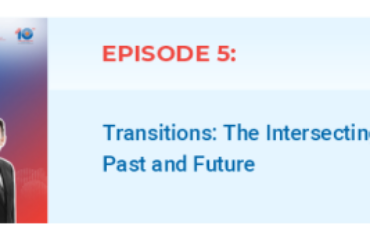
Vol 82 – AHA CENTRE PODCAST SERIES: AT THE CROSSROADS
Vol 66 – getting to know el niño & la niña.
ASEAN Coordinating Centre for H umanitarian Assistance on disaster management
- Utility Menu
- Join Our Team
- Mailing List
Resilience and Disaster Trends in the Philippines: Opportunities for National and Local Capacity Building
- EndNote XML
The Philippines is one of the top countries in the world at risk of climate-related disasters. For populations subsisting at the poverty line in particular, but also the nation as a whole, daily lives and wellbeing are routinely challenged. The Philippines government takes disaster risk seriously and has devoted significant resources to build disaster capacity and reduce population exposure and vulnerability, nationally and locally. This paper explores the policy and institutional mechanisms for disaster risk reduction management and research which have been conducted in the Philippines related to disaster preparedness, management and resilience.
Recent Publications
- The Environmental Health Impacts of Russia’s War on Ukraine
- Ethiopia Peace & Justice Survey 2023
- Understanding Climate, Conflict, and Environmental Impacts in the Bangsamoro Autonomous Region in Muslim Mindanao (BARMM)
- Towards Resilient Communities: Scoping Study Report | Nepal
- Challenges in Humanitarian Response Implementation: A Large-Scale Review of Aid Worker Perspectives
- 2022 Impact Report
Content Search
Philippines
Philippine Disaster Resilience Foundation Annual Report 2022
Attachments.

2022 Highlight
Two years into the pandemic, PDRF remained dedicated to continuing its mission of guiding its stakeholders toward disaster resilience while navigating and adapting to the Impacts of COVID-19 with the rest of the world.
With the improving situation, PDRF deactivated its Emergency Operations Center (EOC) to White Alert for the COVID-19 pandemic in July. Nonetheless, the EOC remained vigilant and actively monitored Nazards and communicated them to its private sector network, which allowed prompt responses to disaster-affected areas, supporting the government, and providing crucial aid to affected families.
PDRF was proactive in embracing the gradual easing of restrictions set by the COVID-19 Inter-Agency Task Force (IATF). Adhering to health protocols to ensure the safety of participants, project teams have resumed conducting face-to-face events and facilitating capacity-building interventions.
The international community has taken notice of PDREF's exceptional efforts. With the relaxation of restrictions on international flights, PDRF seized the opportunity to extend its reach and influence by sharing Its remarkable work with international audiences. This global engagement highlights PDRF as a role model for private sector involvement In DRRM.
Furthermore, the addition of two new Donor Members and one Member Company signified PDREF's growth and impact and the increasing recognition and support for PDRE in strengthening Its ability to drive positive change In DRRM.
PDREF's resilience and adaptability throughout the pandemic Nave positioned it as a model of excellence in DRRM. The continuation of essential services and the expansion of international engagements and memberships exemplify PDREF's dedication to fostering disaster resilience worldwide.
Related Content
Joint statement of the humanitarian country team on the 10th year anniversary of super typhoon haiyan in the philippines.
Philippines + 1 more
Philippines Assistance Overview, September 2023
Philippines: abra earthquake - operation n° mdrph047 final report, philippines: floods and typhoons 2020 - final report (mdrph041).
Resilience and Disaster Trends in the Philippines: Opportunities for National and Local Capacity Building.
37 citations
30 citations
27 citations
19 citations
13,413 citations
10,995 citations
4,148 citations
351 citations
254 citations
Related Papers (5)
Trending questions (1).
The information provided does not mention anything about building a recreational facility complex in light industrial land use in the Philippines National Building Code.
Ask Copilot
Related papers
Contributing institutions
Related topics
An official website of the United States government
The .gov means it’s official. Federal government websites often end in .gov or .mil. Before sharing sensitive information, make sure you’re on a federal government site.
The site is secure. The https:// ensures that you are connecting to the official website and that any information you provide is encrypted and transmitted securely.
- Publications
- Account settings
- Advanced Search
- Journal List
- PLoS Currents


Resilience and Disaster Trends in the Philippines: Opportunities for National and Local Capacity Building
Tilly alcayna.
Dept of Global Health and Population, Harvard Humanitarian Initiative, Cambridge, Massachussets, USA
Vincenzo Bollettino
School of Government, Ateneo de Manila University, Quezon City, Philippines
Patrick Vinck
Associated data.
There is no raw data associated with this paper.
Introduction: The Philippines is one of the top countries in the world at risk of climate-related disasters. For populations subsisting at the poverty line in particular, but also the nation as a whole, daily lives and wellbeing are routinely challenged. The Philippines government takes disaster risk seriously and has devoted significant resources to build disaster capacity and reduce population exposure and vulnerability, nationally and locally. This paper explores the policy and institutional mechanisms for disaster risk reduction management and research which have been conducted in the Philippines related to disaster preparedness, management and resilience.
Methods: This study draws on direct observations of and conversations with disaster management professionals, in addition to a review of the extant literature on resilience and disaster preparedness, in the Philippines. This is a descriptive study based on a search of mainly peer-reviewed studies but also articles, reports, and disaster risk reduction and response projects in the Philippines. Search words used in various combinations included: Resilience, Philippines, Disaster Preparedness, Community-based, Disaster Risk Reduction, Capacity-building.
Results: Numerous activities in community based resilience and DRR have been identified across the whole disaster continuum. Yet, important gaps in research and practice remain.
Discussion: The Philippines, is a leading regional actor in disaster risk management. However, a full picture of who is doing what, how, where and when on resilience and disaster preparedness does not exist. Consequently there is no single study that compares the impacts and results that different preparedness measures are having in the Philippines. We recommend further research focussed on mapping the network of actors, understanding community perceptions of disaster risk preparedness and resilience, and investigation into the socio-ecological systems of different communities.
Introduction
An archipelago of over 7,100 islands, the Philippines is the fourth most at-risk country in the world in terms of climate-related natural disasters, such as typhoons, sea level rise, flooding and extreme temperature. 1 It is one of the top three countries in the world for population exposure and has the largest proportion of capital investment and stock along coastlines. 2 Already it is estimated that multi-hazard average annual loss for the Philippines is US$7.893 million, which is equivalent to 69 per cent of social expenditure in the country. 2 The changing nature of meteorological hazards and emergence of the ‘New Normal’ mean that events such as Super Typhoon Haiyan – and the devastating impact it had - can be expected to occur more frequently, intensifying potential losses. 3 , 4 High levels of poverty (25 per cent of the population are living below the national poverty level) and high inequality 5 result in large demographics being unable to prepare, cope with and recover from disasters. The Philippines government has devoted significant resources to build disaster capacity and reduce population exposure and vulnerability. A focus on the Philippines with its high risk, challenges of poverty and inequality, can serve as a model on how to build resilience and promote disaster risk reduction (DRR).
This paper explores the policy and institutional mechanisms for disaster risk reduction management and research which have been conducted in the Philippines related to disaster preparedness, management and resilience. Here, the term ‘preparedness’ follows the UNISDR definition of “the knowledge and capacities developed by governments, professional response and recovery organizations, communities and individuals to effectively anticipate, respond to, and recover from, the impacts of likely, imminent or current hazard events or conditions”. The definition of resilience is also taken from UNISDR terminology to mean “the ability of a system, community or society exposed to hazards to resist, absorb, accommodate to and recover from the effects of a hazard in a timely and efficient manner, including through the preservation and restoration of its essential basic structures and functions”. It provides an assessment of extant research on the theory and practice of community-based resilience, highlights the gaps in activities being conducted, and finishes by providing recommendations of key priorities for the future of resilience and DRR work in the Philippines, a leading regional actor in disaster risk management.
Materials & Methods
Research Questions
In addition to a scoping study undertaken in the Philippines in September, 2015 6 , this literature review aims to summarise research around the following questions: What are the advantages of looking at resilience through a community lens? What are the policy and institutional mechanisms for disaster risk reduction management in the Philippines? What work has been conducted in the Philippines related to resilience and DRR? Where are the gaps and what is the future of community resilience in the Philippines?
Secondary data review
This is a descriptive study based on a search of mainly peer-reviewed studies but also articles, reports, and disaster risk reduction and response projects in the Philippines. Data was collected on disaster-related projects to-date. The review was done using search engines such as Google Scholar and Harvard Library HOLLIS+. Search words used in various combinations included: Resilience, Philippines, Disaster Preparedness, Community-based, Disaster Risk Reduction, Capacity-building.
Limitations
Project specific reports by NGOs, mostly found in the grey literature, have limited inclusion as it was beyond the scope of this paper to assess all previous and on-going projects. Rather, this paper seeks to explore current research in resilience and disaster risk management in the Philippines to understand how research is informing disaster risk management policy and practice in the Philippines.
What are the advantages of looking at resilience through a community lens?
Like resilience, ‘community’ is a popular term that is still loosely defined in the literature. 7 , 8 A group of people living in the same place or sharing similar characteristics may contain numerous internal conflicts and divisions and may not act as a cohesive entity during a disaster, despite the connotations the term ‘community’ conjures. 9 Nevertheless, measuring resilience at the community level is advantageous. Communities have a unique understanding of the factors that contribute to their ability to resist, absorb and recover from disturbances as well as a direct understanding of the risks that they face. The social norms, social capital and social networks in which individuals are embedded will determine disaster behaviour and the outcomes of a disaster. 10 Preparedness plans developed internally by communities have been shown to be better than those developed externally by consultants. 11 In the event of a disaster, neighbours and local peers are inevitably the first responders. Communities are therefore the most effective locus of disaster preparedness activities.
What are the policy and institutional mechanisms for disaster risk reduction management in the Philippines?
The Philippines has a strong set of policies, frameworks and plans for disaster risk reduction (DRR), through which work on resilience can be grounded. The key law is the Philippine Disaster Risk Reduction and Management Act of 2010 (DRRM Law). The DRRM Act establishes local councils at the regional, provincial, municipal, and community levels that replicate the National Disaster Risk Reduction and Management Council's (NDDRMC) responsibilities; however, these local councils are often understaffed or lacking professionalisation and a significant gap exists as the NDRRMC cannot supervise all the local councils. 12 Local political leaders' support of disaster management, local appreciation of the importance of disaster management, funding, and training and support from the national government determine the effectiveness of local councils. 12 Climate change is altering the playing field as areas that had historically not been affected by disasters, and as such had been less likely to proactively view disaster management, are increasingly likely to face extreme, unpredictable weather events. 12
What work has been conducted in the Philippines related to resilience and DRR?
Hazards, vulnerability and risk assessments
It is uncertain how well disaster risk is communicated to the public, how many projects focus on improving community knowledge on hazards and disaster risk, and challenges remain in measuring and assessing the complex nature of all the factors which can influence disaster risk locally. There are limited studies to measure the combined socio-ecological resilience of the Philippines, at local and national scales, 13 , 14 to help decision-makers locate areas of high vulnerability. Comprehensive risk and vulnerability nation-wide and localised mapping exists from organisations such as the Manila Observatory and the Department of Science and Technology. Post-disaster assessments exist 15 but there is more need for equivalent pre-disaster risk assessments to be generated and shared with communities. Communicating risk information and ensuring communities personalise their risk are proving challenging. Even amongst highly educated demographics, such as medical students, there was a tendency to overestimate the risk of low probability, high consequence disasters such as geophysical disasters (e.g. earthquakes) over high probability events like floods. 16 Post-Haiyan surveys found that the public had not understood what “storm surge” signified, 17 did not necessarily know that their houses were located in a potential storm surge area, and even expressed opinions that the risk maps may be exaggerated. 18 A number of NGOs, including the Philippines Red Cross, conduct community-based vulnerability assessments to improve community awareness. More work on hazard sensitisation and continuing to augment awareness and knowledge of hazards and the threats they pose appear to be needed.
Early warning systems and evacuations
Early warning systems and evacuation plans necessarily rely on a public who understands their risks and understand the consequence of the information being disseminated, so that they can prepare appropriately in sufficient time. 18 , 19 , 20 Community culture, perceptions and values are known to be important components of successful early warning systems and there are calls for greater integration of local/indigenous knowledge related to DRR within science and policy. 21 , 22 Both an independent study and a PAGASA (the Philippine Atmospheric, Geophysical and Astronomical Services Administration) programme introduced community-based monitoring and early warning of hazards into several provinces and showed these were effective complements to traditional centralised early warning systems because they were real-time, localised, empowered those in the best position to undertake preparation and were more likely to be sustained. 23 , 24 Finally, evacuation planning, involving the pre-emptive evacuation of people in high risk locations, has been an effective means of reducing disaster impacts in the Philippines because in general communities are compliant. 15
Risk Transfer Mechanisms
It appears that community networks and reciprocity are the predominant mechanisms through which Filipinos cope with risk. Strong community or familial links have been shown to be just as effective as formal insurance schemes, post-disaster. 25 On an everyday basis, Filipinos promote bayanihan , which is a strong social norm of community welfare and reciprocal labour and comes into play during disasters, in which those less affected help those which have been hit harder. 26 There is some indication that in geographical regions most exposed to disaster risk, mutual associations and networks devoted to mutual assistance proliferate most readily. 26 However, community-based mutual assistance activities cannot always be relied upon. Community support may be widespread during the initial rehabilitation efforts, but during long-term recovery community-level activities become rarer and support is exclusive to extended family members. 27 Community-based activities are nuanced, social networks will be influential and the nature of the disaster and devastation will likely determine how the community comes together and who is excluded.
Capacity building for disaster preparedness
Capacity building is occurring across levels from local to national in the Philippines, but focus is predominantly at the local level where numerous actors and networks are collaborating with communities to identify existing capacities, as well as provide the opportunity to build infrastructure, which could minimise the impacts of a hazard. 28 Differences in community resources, livelihoods options and assets affect local capacity and the extent to which capacity can be strengthened. 29 A case study in Iloilo City showed that community-driven DRR required strong social networks, alternative finance facilities, technical professional networks that support community processes, and community managed information systems. 30 Furthermore, it has been highlighted that schools and student groups could play an important, though yet untapped, role in capacity-building for DRR. 31
The government is also contributing significantly to capacitating local government units (LGUs) by developing a checklist of actions to be taken, supplies to be procured, and important resources together with providing communications and contingency templates for disaster preparedness. These are aimed at the Mayors 32 as well as local chiefs of police and fire marshals. Yet, it is not clear whether these data collection efforts at the LGU level will contribute to improved national disaster preparedness. Further, there are limits to some of these capacity building projects including:
- "LGUs usually do not demand or procure research and analysis to inform their policy decision-making process on DRR" 33
- LGU municipalities and barangays lack up to date and sufficient contingency plans 34
- Political leaders lack adequate DRR training 12
- Schools have insufficient contingency plans on camp management and preparedness to act as the evacuation centres. 34
This assessment highlights the continued challenges of transforming policy beyond plans on paper.
Response and relief operations
The economic and geographic scale of destruction and damage to infrastructure, housing, communication lines, 34 and livelihoods assets 35 tests and often surpasses the national disaster response mechanisms, which otherwise are considered, overall, to “function well”. 12 Focusing on Typhoon Haiyan, the literature is divided on whether the response was well coordinated or not. On the one hand, the government played an integral role during the response efforts with the international UN cluster system joining the government cluster system and that coordination was good for the most part, resulting in far less morbidity and mortality than previous post-disaster scenarios. 36 Whilst on the other hand, reports highlight significant tension between the government and INGOs as the L3 response led to the sudden influx of international actors which undermined the usual procedures and relationships established by the Government of the Philippines. 37
There are cases of different actors working in parallel and duplicating efforts alongside cases of exemplary programming and collaboration. Successful programming included: collaborations between the government and communities for beneficiary selection; organisation of debris from coconut plantations to provide lumber for housing reconstruction; and the restoration of communication lines through emergency radio stations and private networks. 34 Parallel efforts occurred for a number of reasons:
- National NGOs were unaware of the cluster system and the cluster system did not actively engage with non-cluster actors, leading to a failure to engage with local actors. 47
- One study found that religious organisations, the private sector and local individuals distrusted the local and national government and so avoided collaboration and coordination. 38
- Coordination lacked between agencies due to the scale of the disaster. Cash transfers - unconditional and conditional - were used by at least 45 international humanitarians agencies reaching 1.4 million affected people, but were difficult to monitor and coordinate, resulting in many families receiving multiple cash transfers, which distorted the market.
Many lessons have been learnt from the response to Typhoon Haiyan, which will hopefully strengthen the national response mechanisms for equivalent future disasters as policies increasingly focus on preventative and proactive approaches to disaster management. 12
Rehabilitation, recovery and reconstruction
Rehabilitation, recovery and reconstruction programmes in the Philippines are hindered by recurrent disasters, a lack of financial resources, and the politicisation of the process. Linking immediate relief with longer-term recovery and disaster risk reduction remains one of the most persistent challenges of the aid sector globally, largely because of continued under-funding of recovery programmes, 36 , 39 confirmed by the post-Typhoon Haiyan experience where less than half of the $788m needed for recovery had been received six months after the disaster. 40 Long-term post-disaster assessments reveal the numerous gaps and challenges of the recovery process. Health, especially mental health, was overlooked 41 ; thousands remained without permanent settlement 38 ; millions were once again living in “unsafe” zones 38 ; and politicisation of the process affected vulnerable groups such as internally displaced people. 42 Despite these problems, reported optimism for recovery is high. Optimism is a powerful aspect of coping capacity and the onus is therefore on the government, local and international organisations to stay committed to their promises and to ensure that disaster affected populations do not lose hope and drive to overcome the impacts of disasters.
Where are the gaps and what is the future of community resilience in the Philippines?
Numerous activities in community-based resilience and DRR have been identified across the whole disaster continuum. Yet important gaps in research and practice remain. Most noticeably, the extant studies fail to provide a full picture of who is doing what, how, where and when on resilience and disaster preparedness. Lacking this, there is consequently no single study that compares the impacts and results that different preparedness measures are having in the Philippines.
In addition, specific gaps were identified in programming focusing on public knowledge about risks; data collection and socio-ecological research; and understanding communities. Firstly, a changing climate and more extreme weather events mean that communities can no longer rely on past experience to help prepare for future disasters. Communities need to be able to access current continually updated information on what changing global environmental systems and the impacts of previous disasters mean for their future disaster risk. Secondly, important data and research which could help inform policy and disaster management decisions are lacking, including: published data on local, disaggregated environmental and ecological changes and how these changes feed into disaster risk; population-based surveys on disaster risk perceptions and preparations; research on how smaller scale disasters may erode resilience; and long-term recovery and relocation initiatives to ensure transformative adaptation towards greater resilience. 43 , 44 , 45 , 46 Thirdly, despite communities being the focus of attention of a number of studies, there are differing definitions of community, varied ways of measuring social capital, and limited research on marginalised persons who are excluded from community support (such as bayanihan) .
Many important questions remain to be addressed such as what training and support do local political leaders need so that they are more effective in DRR? 12 Can communities withstand future Haiyan-like events? What are the limits of community-based disaster resilience? Which community members are likely to be excluded from community networks? What pressures can these networks withstand and under what conditions do they breakdown?
Recommendations for future work
To further build on the ongoing disaster preparedness and resilience initiatives occurring in the Philippines, three top priorities for future work were identified:
- Map the network and activities of national and international agencies and actors working on resilience and disaster preparedness. This mapping should capture who is doing what activities and where. It would help identify programmatic and geographic gaps and overlaps and contribute towards increasing coordination and mutual learning among the different actors.
- Research into community perceptions of disaster risk preparedness and resilience. Risk perception, cognitive barriers and cultural values shape how people will respond to disaster warnings and preparedness initiatives. Interventions and knowledge campaigns must be tailored to ensure maximum acceptance and adoption by people and their communities. This research is vital to help inform policy, initiatives, and operational programming.
- Increased research into the socio-ecological systems and what metrics can capture this system. This research must look at how climate change will impact environmental systems which in turn affect social systems; how certain demographics (e.g. informal settlers) may live in different socio-ecological systems compared to their wider communities. This research would help inform mitigation and prevention strategies alongside preparedness.
This paper assessed the extant research and practice of resilience and disaster preparedness in the Philippines, which serves as a good model on how to strengthen resilience and promote disaster risk reduction at the local level. Research and interventions are already identifying examples of best practice in disaster preparedness, response and recovery; however, important underlying drivers of disaster risk, such as a degrading environment and inequality, still remain over looked. With the frequency and intensity of disasters set to increase, communities are going to have to prepare more for worse events. This poses the question of how much longer we can react to disasters rather than mitigating them in the first place. The urgency with which we must address the research gaps across the disaster cycle, and in particular in preventing and mitigating disaster risk alongside preparedness, is mounting. Research findings must then be translated in policy decisions with committed implementation. A greater prioritisation of mitigation, prevention and preparedness is not only economically advantageous, but from a humanitarian point of view, reduces the human costs, and aligns with initiatives on sustainable development.
Data Availability
Correspondence.
Tilly Alcayna: [email protected]
Vincenzo Bollettino: [email protected]
Biographies
Tilly Alcayna is a Research Consultant for the DisasterNet project which focuses on supporting local and national capacity for disaster preparedness and response in the Philippines, as part of the Resilient Communities Program. Previously, Tilly has worked in the Philippines, Nepal, Colombia, and South Sudan, conducting disaster risk and health assessments. She is the Director of Futureproof-Ideas an international research consultancy that brings together expertise from different disciplines to generate sustainable solutions to cross-cutting problems related to health, the environment, and society. Previously she has worked for the European Commission, the British Red Cross in the UK Operations Division, and the Royal Geographical Society (with IBG) in the Expedition Advisory Centre in London. Tilly holds a Masters in Public Health in Disasters (MPH) jointly from the Universidad de Oviedo, Spain and Karolinska Institutet, Sweden. She also holds a Bachelor in Biological Sciences from the University of Oxford. Her research interests lie in socio-ecological systems, disaster risk reduction, environmental health and humanitarian assistance.
Dr. Bollettino is the Director of Resilient Communities Program at the Harvard Humanitarian Initiative .Prior to his current appointment, Dr. Bollettino served for five years as Executive Director of the Harvard Humanitarian Initiative. Dr. Bollettino has twenty years of professional and academic experience in international politics, humanitarian action, civil-military engagement in emergencies, and the security of humanitarian aid workers. He has spent that past fourteen years of his career at Harvard University in administration, teaching, and research. Current research focuses on civil military engagement during humanitarian emergencies, the security of humanitarian aid workers, and on the professionalization of the humanitarian aid field. Dr. Bollettino has managed several large training and policy development initiatives related to international humanitarian law, responsibility to protect, and peace building operations and has designed security reporting systems and program evaluations for field security measures in complex emergencies. He has authored several publications related to disaster management and humanitarian assistance, and has consulted with numerous international nongovernmental organization and UN agencies. He has taught courses on research design, peace building, and international politics at the Harvard Extension School. Dr. Bollettino came to Harvard University on a post-doctoral fellowship with the Program on Non-violent Sanctions and Cultural Survival at the Weatherhead Center for International Affairs. He completed his Ph.D. at the Graduate School of International Studies at the University of Denver. Dr. Bollettino currently serves on the boards of ELRHA (Enhancing Learning and Research for Humanitarian Assistance), ACF (Action Against Hunger), and the International Solutions Group.
Patrick Vinck, Ph.D. Director of research, Harvard Humanitarian Initiative. Assistant professor, Harvard Medical School and Harvard T.H. Chan School of Public Health
Funding Statement
The authors are funded through a grant supporting the Harvard Humanitarian Initiative DisasterNet project. The funder had no role in study design, data collection and analysis, decision to publish, or preparation of the manuscript. The authors have declared that no competing interests exist.
Contributor Information
Tilly Alcayna, Dept of Global Health and Population, Harvard Humanitarian Initiative, Cambridge, Massachussets, USA.
Vincenzo Bollettino, Dept of Global Health and Population, Harvard Humanitarian Initiative, Cambridge, Massachussets, USA.
Philip Dy, School of Government, Ateneo de Manila University, Quezon City, Philippines.
Patrick Vinck, Dept of Global Health and Population, Harvard Humanitarian Initiative, Cambridge, Massachussets, USA.
- Subscribe Now
[OPINION] Challenging the narrative of Filipino resiliency
Already have Rappler+? Sign in to listen to groundbreaking journalism.
This is AI generated summarization, which may have errors. For context, always refer to the full article.
![disaster resilience philippines essay [OPINION] Challenging the narrative of Filipino resiliency](https://www.rappler.com/tachyon/2020/11/IMHO-Filipino-Resiliency-November-17-2020.jpg)
In the wake of 4 typhoons that devastated the Philippines in a two-week span, numerous areas in the country were left submerged, with hundreds of thousands displaced and the death toll still rising. As the country reels from the effects of the typhoons, people have taken to social media to share stories of suffering, and appeals for relief and rescue for those affected. Interspersed between these appeals are calls from netizens not to “glorify resilience.”
What does it mean to glorify resilience and why is it problematic? “Glorify” is defined as “to cause to be or seem to be better than the actual condition.” To glorify Filipino resilience is to make resilience appear better than it actually is. While praising resilience in and of itself is uncontroversial, as with many things, context matters. And it is in the context of post-disaster recovery and survival that the narrative of Filipino resilience often takes centerstage. The narrative of Filipino resilience is derived from overcoming experiences of suffering and trauma due to disasters.
Understanding the context also means taking stock of our experience with how the government has handled disasters. For a country that is regularly battered by typhoons, the government has failed to keep up with the alarming rate of climate change. Despite the abundance of champions of the environment and climate justice, our policies, infrastructure, and general preparedness have always been wanting.
The issue goes beyond preparedness for environmental emergencies. Lack of sustainable urban planning has resulted in a failure to control urban sprawl, a key issue in prevention. Even the national and local government capacities to effectively handle post-disaster rehabilitation and reconstruction have been criticized. Moreover, our leaders’ seeming ineptitude in crisis governance and allegations of mishandling of funds that at times follow disaster rehabilitation and reconstruction efforts make matters worse. It is then the height of brazenness when it is our own government leaders who extol narratives of Filipino resilience.
Even when the glorification of resilience is done by members of the public, problems may still arise. There is no denying that typhoons (and disasters in general) affect people of different socio-economic status disproportionately. It is the poorer families and individuals who often find themselves in more vulnerable situations, not by choice but out of necessity. In addition, their insecurity also makes it more difficult for them to recover after disasters. Hence, while disasters cannot discriminate, our country’s socio-economic development does. Therefore, one must bear in mind that having the luxury to glorify resilience comes from a position of privilege.
An intimately related concept that is also used interchangeably with glorification is the concept of romanticization. Romanticization is said to “manifest itself through assimilation or internalization of an event by individuals or a community to obscure its negative implications.” To romanticize resiliency is to present the resilient Filipino as the desired image of a disaster victim — one who survives.
[ANALYSIS] Filipinos aren’t so much resilient as Duterte is incompetent, abusive
![disaster resilience philippines essay [ANALYSIS] Filipinos aren’t so much resilient as Duterte is incompetent, abusive](https://www.rappler.com/tachyon/2020/11/Disaster-Resilience-November-13-2020.jpg?fit=449%2C449)
Given this backdrop, we can problematize the glorification and romanticization of Filipino resilience for the following reasons:
First, it detracts from the suffering and trauma that victims of disasters are experiencing. It diminishes the sufferings and trauma experienced by the victims. While one can certainly praise resilience while also raising awareness for the victims’ sufferings and trauma, in this context, glorification and romanticization add nothing to the discourse on how to alleviate the harsh realities that victims face. It is ironic that while narratives of Filipino resilience earn them admiration and attention from the public, it does not offer anything tangible that they deserve given the urgency of their situation.
Second, it undermines the importance of immediate action by overemphasizing the image of a Filipino who is able to survive in spite of his/her circumstances, rather than that of a Filipino who is able to survive because he/she is given the support he/she deserves . It shifts the accountability to the victims by implying that overcoming their suffering and trauma is a matter of choosing to be resilient, when in truth, the victims have diminished agency as a consequence of their socioeconomic status or because regardless of the choices they make, institutions have failed to prepare them from the negative consequences of natural disasters. No one chooses to be vulnerable, but the structural causes of their insecurity have forced them to be locked in with few to no options.
Third, it normalizes the vicious cycle of displacement due to disasters – as if those in vulnerable situations should just accept and get used to the experience of displacement every time disasters hit the country. This can lead to an overemphasis on the crisis management component of disaster management over risk management. Focus is primarily placed on assessment, response, recovery, and reconstruction stages while mitigation and prevention, preparedness, and prediction stages are given less attention.
Fourth, the resilient Filipino – one who overcomes in spite of – is idealized at the expense of those who are unable to overcome their sufferings and trauma, further victimizing them. By implication, the victims’ inability to overcome is seen as a weakness and that their own sufferings and trauma are imputed to their own actions. What about those who lost their lives? Are they mere statistics that are included in reports and then later forgotten?
Finally, the notion of Filipino resiliency as it is portrayed in the mainstream is limited to the idea of resiliency as a virtue, as something that is characteristic of a Filipino. The image of the Filipino who is able to keep faith and overcome his/her hardships is celebrated in popular culture. But the resiliency in the context of disaster risk reduction and mitigation goes beyond that. It includes the capacity of communities (and the country as a whole) to adapt to and recover from disasters or calamities. Government preparedness is a key element of disaster resilience.
In conclusion, while accountability is not solely on the government, the duty of the government to serve and protect demands that our leaders should bear most of the responsibility and accountability. This is especially true in cases where natural disasters may become man-made calamities due to government negligence. While the aim is not to downplay the will and spirit of the Filipino to survive, our experience with government failures and the exploitation of Filipino resilience necessitates challenging the dominant narrative.
As for offering an alternative to the glorification and romanticization of Filipino resilience, we should challenge the dominant narrative by promoting a discourse beyond resiliency as a virtue . The discourse should be on the kind of resiliency that puts the emphasis on building institutional (i.e., structural) capacities at both local and national levels to adapt and recover. Governance and leadership should also improve to allow for inclusive resilience – one that gives voice to marginalized sectors of society. Individually, we can help amplify the voices of the victims and survivors by echoing their calls for assistance, and helping them voice out their narratives of suffering and trauma. This way, they can take back their agency and challenge the dominant narrative of what it truly means to be a “resilient Filipino.” – Rappler.com
Abu Al-Rasheed T. Tanggol is the Peace Action Coordinator at the Institute for Peace and Development in Mindanao and Associate Lecturer at the Department of Political Science, Mindanao State University-Iligan Institute of Technology. He’s been involved in different disaster relief operations in the past for local and international organizations.
Add a comment
Please abide by Rappler's commenting guidelines .
There are no comments yet. Add your comment to start the conversation.
How does this make you feel?
Related Topics
Recommended stories, {{ item.sitename }}, {{ item.title }}.
Checking your Rappler+ subscription...
Upgrade to Rappler+ for exclusive content and unlimited access.
Why is it important to subscribe? Learn more
You are subscribed to Rappler+
- Global Assessment Report (GAR)
- PreventionWeb
Special Events
- Global Platform
- International Day for Disaster Reduction
- World Tsunami Awareness Day
- Sendai Framework Monitor
- Voluntary Commitments
- UNDRR Africa
Disaster-prone Philippines steps up urban resilience

GENEVA, 8 February 2017 – The Philippines, one of the most disaster risk-prone nations in the world, is stepping up efforts to ensure that its communities can withstand natural and human-induced hazards.
“If we’re able to reduce risk then there may be no need for response. So the more we focus on prevention and mitigation, the less we might need to respond,” said Mr. Ricardo B. Jalad, Administrator of the Office of Civil Defense and Executive Director of the National Disaster Risk Reduction and Management Council (NDRRMC).
“We’re trying to focus on local government units and communities. That’s our priority,” he said, during a visit to the Geneva headquarters of the UN Office for Disaster Risk Reduction (UNISDR).
Mr. Jalad, who took office last July, met with UNISDR’s head Mr. Robert Glasser, Special Representative of the UN Secretary-General for Disaster Risk Reduction.
“The Philippines is such a key country when it comes to disaster risk reduction. Partly because it is so exposed to hazards, but also because of the way that its learning from those hazards has helped it reduce disaster risk, and because of the lessons it offers for other countries,” said Mr. Glasser.
Last week, the NDRRMC called on local governments in the country’s Eastern Visayas area – also known as Region 8 – to sign up to UNISDR’s Making Cities Resilient campaign at a ceremony planned for 6-7 April.
Home to 4.1 million people, and nicknamed the “geographical backbone” of the Philippines, Eastern Visayas was the location of the worst disaster to affect the country in recent decades.
The November 2013 Typhoon Haiyan – known in the Philippines as Yolanda – killed more than 7,000 people, affected 25 million, and caused US$10 billion in estimated economic losses. In the city of Tacloban alone, one of the areas hardest hit, 90% of all structures were either destroyed or damaged
A major issue exposed by the disaster was the need for early warning terminology to make sense to the general public. Forecasters used the technical term “storm surge”, which describes how the sea is driven inland by a typhoon in a tsunami-like wave, but that label did not grab the population’s attention sufficiently.
In Haiyan’s wake, the Philippines shook up its methods for keeping the public risk-informed, and ensuring early dissemination of warnings and efficient evacuations to promote a “zero casualty” approach. That proved successful in the face of major storms such as Typhoon Hagupit in December 2014 and Typhoon Koppu in October 2015.
“We were able to learn from our past disasters. We were able to improve our system,” said Mr. Jalad.
“The biggest problem we have now is in the rehabilitation and recovery phase,” he added.
Making Cities Resilient was launched in 2010 to help reduce disaster risk at the local level by sharing good practices from around the globe. It has grown into a global network of more than 3,400 members, ranging from towns to entire provinces, and the numbers are continuing to expand.
Currently, more than 100 provinces, cities and other municipalities in the Philippines
Self-assessment according to a series of benchmarks known as the “Ten Essentials” lies at the heart of the campaign, along with sharing best practice among participating cities. Areas under scrutiny include a city’s budget, how critical infrastructure is handled, policies to ensure all members of the community are included in risk planning, the safety of schools and health facilities, risk-compliant building regulations and land use, protection of ecosystems, and early warning systems.
The bedrock of the Philippines’ policies is the Sendai Framework for Disaster Risk Reduction, a 15-year international agreement adopted in 2015, Mr. Jalad underlined. It was the first building block of the 2030 Agenda for Sustainable Development, and ties in with the Sustainable Development Goals.
The country has volunteered to pilot monitoring of implementation of both the Sendai Framework and the Sustainable Development Goals.
“It’s going to be really interesting for the Philippines to demonstrate to other countries how to integrate these two critically important and related priorities,” said Mr. Glasser, noting that the issue would be in the spotlight at the 2017 Global Platform for Disaster Risk Reduction, which takes place in May in Mexico.
Is this page useful?
Thank you. If you have 2 minutes, we would benefit from additional feedback (link opens in a new window) .

- Collaborators
- News & Events
- UNESCO Chair

Infrastructure Resilience Initiatives: The Philippine Experience
15 March 2024
The webinar will feature frameworks, practices, and experiences in advocating infrastructure resilience of existing buildings in the Philippines.

Event Information
11 April 2024, 10:00 am - 12:00 pm (UK time), 5:00 pm - 7:00 pm (Philippines time)
This event is free and open to all.
Where: online (register using the link below)
Zoom Registration Link
- UNESCO-Chair
- UNESCO-Chair Educational Activities
Related News
Tweets by ChairDrr
Tweets by EPICentreUCL
- Get Involved
Australia and UNDP Highlight Collective Action for Disaster Resilience in Northern Samar
March 18, 2024.
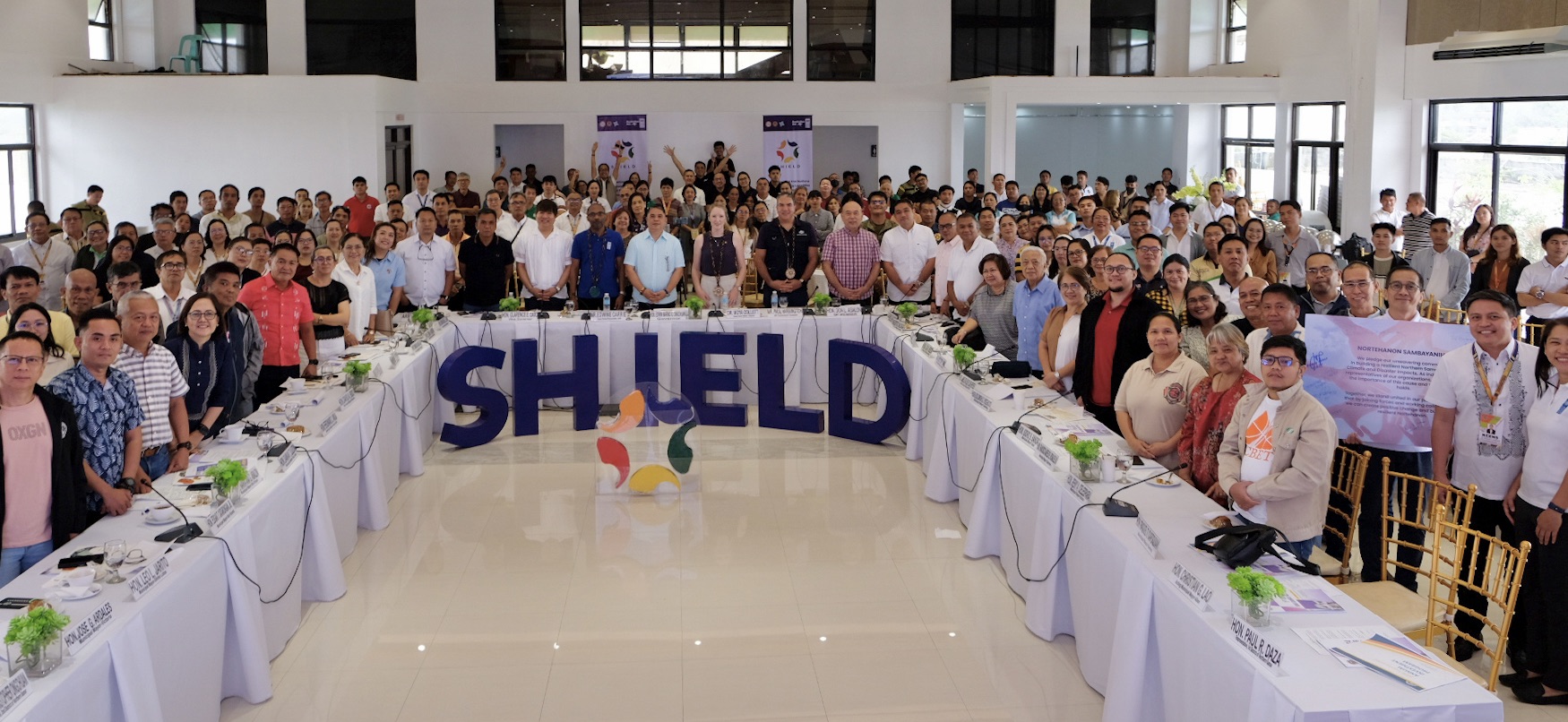
CATARMAN, NORTHERN SAMAR, PHILIPPINES – The Provincial Government of Northern Samar, in collaboration with the Australian Government and the United Nations Development Programme (UNDP) in the Philippines, gathered provincial representatives and stakeholders for the SHIELD Resilience Blitz to highlight and showcase the accomplishments and progress of the Strengthening Institutions and Empowering Localities against Disasters and Climate Change (SHIELD) Programme in enhancing resilience in Northern Samar.
The SHIELD Resilience Blitz promoted proactive, rapid, and comprehensive action to strengthen communities against the adverse effects of disasters and climate change and enhance resilience in the province. The event gathered stakeholders from diverse sectors in Northern Samar to come together, share insights, and reaffirm their commitment to empowering communities to withstand and recover from adversity caused by disasters and climate change. The event marked the public unveiling of the SHIELD logo and the launch of the Nortehanon Sambayanihan Commitment Pledge.
Among the participants were Deputy Head of Mission of the Australian Embassy in the Philippines Dr. Moya Collett, UNDP Philippines Deputy Resident Representative Edwine Carrié, Governor Edwin Ongchuan, Vice Governor Clarence Dato, Office of Civil Defense (OCD) Assistant Regional Director Rey Gozon, Department of Science and Technology (DOST) Region 8 Supervising Science Research Specialist Engr. Anorly Narca, and representatives of the Northern Samar Provincial Development Council.
In his message, UNDP Philippines Deputy Resident Representative Edwine Carrié expressed the importance of climate resilience in Northern Samar. He highlighted that: “This province is no stranger to the devastating effects of climate change, with frequent typhoons leaving communities struggling to recover. But it's also a place where we see resilience and strength every day, as people come together to rebuild and support each other.”
Since signing the Memorandum of Understanding in December 2022, SHIELD has been working with Northern Samar to empower the province to develop its provincial development and physical framework plan through a multi-stakeholder approach. Priorities identified under SHIELD's three-year work plan in 2023 reflect a comprehensive approach to addressing the multifaceted challenges faced by the province.
The province aims to leverage its land use and physical framework plans to improve spatial distribution of growth and reduce poverty, which are necessary conditions for building resilience.
In line with these priorities, Northern Samar, in collaboration with SHIELD, has achieved significant milestones. A comprehensive capacity needs assessment was conducted to evaluate the province's current use of vulnerability and risk assessment tools, leading to the identification of capacity gaps and needs.
Provincial Climate Risk Diagnostic workshops facilitated by multi-stakeholder participation have resulted in the completion of the province's risk profile, resilience strategy, and a list of programs and projects aimed at enhancing resilience.
Furthermore, value chain analysis (VCA) and business continuity planning workshops have been completed, producing VCA for priority commodities such as rice and coconut providing valuable insights into enhancing value chain resilience. Through industry-level Business Continuity Plans, Northern Samar is actively working towards strengthening the resilience of its key agricultural sectors, paving the way for sustainable economic growth and development.
Dr. Moya Collett, Deputy Head of Mission of the Australian Embassy in the Philippines , expressed the Embassy’s commitment to the cause by stating that, “ Building state and community resilience is a major pillar of Australia’s international development policy. As a strategic partner to the Philippines, Australia has supported initiatives to enhance resilience in the region over the years. We remain committed to helping local government partners such as Northern Samar reduce their vulnerability to the effects of disasters and climate change.”
As a symbol of support for continuous capacity development interventions, a drone was handed over to the Northern Samar Provincial Government. This gesture exemplifies the commitment of SHIELD and its partners to equip communities with the tools and resources necessary to mitigate and manage risks effectively. The drone will play a crucial role in enhancing the province's disaster preparedness and response capacity, contributing to more resilient and adaptive communities.
Governor Edwin Ongchuan said in his acceptance speech, “ On behalf of the Provincial Government of Northern Samar, I would like to convey my gratitude to the UNDP SHIELD Programme consortium partners and the Australian Government for the donation of this drone. As we all aim to build climate and disaster-resilient communities, I look forward to the usage of modern technologies in the planning, implementation, and evaluation stages of our plans. ”
SHIELD is a multi-year partnership covering 11 provinces and two regions in the Philippines that are among the most vulnerable to disasters and climate change impacts. It is implemented by the UNDP Philippines, the consortium partners: Philippine Business for Social Progress (PBSP), National Resilience Council (NRC), Consortium of Bangsamoro Civil Society (CBCS), and United Nations Human Settlements Programme (UN-Habitat), together with government partners: Department of the Interior and Local Government (DILG), Office of the Civil Defense (OCD), and Department of Science and Technology (DOST), with generous support from the Australian Government.
The Programme aims to equip the Philippines with robust disaster risk reduction and management systems. By strengthening the country's ability to anticipate, plan, respond to, and recover from disasters and the adverse effects of climate change, the impact on communities can be mitigated, protecting lives and livelihoods.
Related content

Press Releases
Animal town: play your way to a greener and bluer planet.
To foster love for Philippine wildlife and biodiversity, the Biodiversity Finance Initiative (DENR-UNDP BIOFIN) of the United Nations Development Programme (UNDP)...
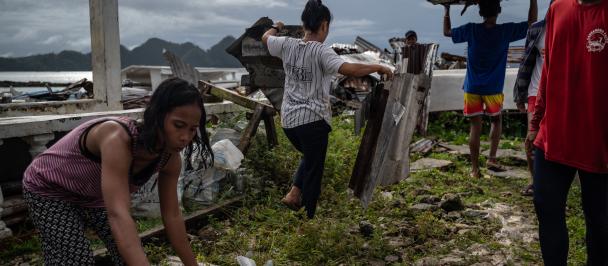
Rich countries attain record human development, but half of the poorest have gone backwards, finds UN Development Programme
Our new UNDP Human Development Report finds that uneven development progress is leaving the poorest behind, exacerbating inequality and stoking political polariza...

Japan, UNDP drive sustainable development in BARMM with livelihood and waste management equipment
In an official mission to BARMM, the Deputy Chief of Mission of the Embassy of Japan in the Philippines, Minister Kenichi Matsuda, and UNDP Deputy Resident Repres...
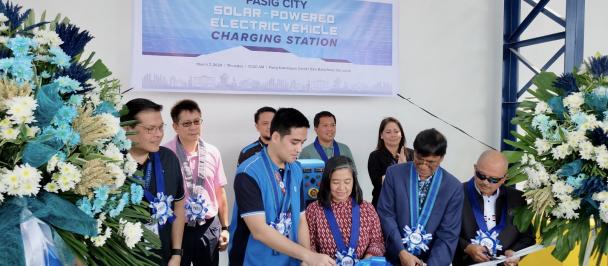
UNDP, DOTr launch solar-powered electric vehicle charging station in Pasig City
A solar-powered Electric Vehicle Charging Station (EVCS) featuring three (3) charging terminals and capable of servicing six (6) electric vehicles (EVs) simultane...

New Directions for Human Development in the Philippines
Human development revolves around elevating peoples’ capabilities, broadening the scope of their choices, upholding their freedom, and advocating for their human ...

IMAGES
COMMENTS
This is the first nationwide household survey on measures of disaster resilience and disaster preparedness carried out in the Philippines. It comes at a time of critical importance as efforts are being made to ensure disaster management is based on evidence, especially at the local level and amid national discussions on centralizing disaster ...
PERCEPTIONS OF DISASTER RESILIENCE AND PREPAREDNESS IN THE PHILIPPINES • INTRODUCTION • V Yet, 83 percent of Filipinos claimed to have discussed emergency plans with their families. However, only 27 percent of the population was confident that they could adapt to changes resulting from a disaster, and
professionals, in addition to a review of the extant literature on resilience and disaster preparedness, in the Philippines. This is a descriptive study based on a search of mainly peerreviewed studies but also articles, reports, and disaster risk reduction and response projects in the Philippines.
The Philippines Disaster Resilience Act A legislative process on disaster resilience has been going on in the two branches of the Philippines parliament since 2019. As part of this, the Senate is currently discussing 'An Act Creating the Department of Disaster Resilience, Defining its Powers and Functions, and Appropriating Funds Therefor'
The NDRRMP is in line with the National Disaster Risk Reduction and Management Framework (NDRRMF), which provides the primary guide for the country's disaster risk reduction and management (DRRM) efforts. The Framework envisions a country of safer, more adaptable, and disaster-resilient Filipino communities working toward long-term development.
Gero A, Meheux K & Dominey-Howes D 2010, Disaster risk This evidence supports the development and integration reduction and climate change adaptation in the Pacific: the challenge of strong community engagement approaches for CCA of integration, University of New South Wales Press, Sydney. and DRRM in the Philippines that would also embrace ...
Preparedness is a component of resilience. Resilience is a long-term concept that covers the full disaster continuum and includes aspects of positive transformation that enhances the ability of ...
Notes on contributors. Renato A. Villano is a Professor of Economics and specializes in the area of applied econometrics, agricultural economics and development economics. His recent research activities focused on efficiency and farmer decision-making analysis, risk analysis in production systems, resilience and poverty measurement and impact assessment.
For the entire month of July 2019, the Philippines celebrated its National Disaster Resilience Month (NDRM) that involved numerous events and activities across the nation aimed at increasing awareness and resilience for its people in the face of ongoing natural disaster threats. The theme for 2019's celebration was Kahandaan sa Sakuna't ...
The Philippines government takes disaster risk seriously and has devoted significant resources to build disaster capacity and reduce population exposure and vulnerability, nationally and locally. This paper explores the policy and institutional mechanisms for disaster risk reduction management and research which have been conducted in the ...
2022 Highlight. Two years into the pandemic, PDRF remained dedicated to continuing its mission of guiding its stakeholders toward disaster resilience while navigating and adapting to the Impacts ...
The cost of disasters to the Philippines is a massive burden on peoples' security and well-being, and on national, local and household budgets. It tears through the social contract between leadership, state institutions and people. Local governments and communities bear the heaviest brunt, repeatedly hitting hardest at the poor and most vulnerable.
Building resilient communities: Promoting people participation to address disaster risk is a collection of stories from Greenpeace's partner organizations and local government units (LGUs) that found grassroots initiatives and solutions to some of the challenges in a disaster response. The narratives written here exemplify how people-centered ...
After Typhoon Yolanda devastated the Philippines, 'resilient' was a term frequently used by the media, survivors, government officials and various other stakeholders in the city of Tacloban to describe those affected by the disaster. The focus of this article is therefore on how this term was articulated and experienced during this period.
(DOI: 10.1080/17565529.2019.1599317) In this paper, we assess the resilience of households in responding to climate-induced calamities such as flash floods and landslides in Compostela Valley of the Philippines. Using cross-sectional survey data collected in 2013 and 2014, we applied the integrated data envelopment analysis (DEA)-based network model to estimate a composite resilience score ...
Abstract: Purpose: The purpose of this paper is to explore the impact of disaster rehabilitation interventions on bonding social capital in the aftermath of Typhoon Yolanda. Design/methodology/approach: The data from the project is drawn from eight barangays in Tacloban City, the Philippines. Local residents and politicians were surveyed and interviewed to examine perceptions of resilience and ...
The scholarly papers focused on awareness of disaster and disaster risk ... in a rural community's flood recovery and resilience process. ... The Philippines is a disaster-prone country due to its ...
The Philippines is one of the most ecologically vulnerable places in the world, belonging to the Pacific ring of fire facing the realities of harsh weather, earthquakes, and volcanic eruptions ...
Introduction. An archipelago of over 7,100 islands, the Philippines is the fourth most at-risk country in the world in terms of climate-related natural disasters, such as typhoons, sea level rise, flooding and extreme temperature. 1 It is one of the top three countries in the world for population exposure and has the largest proportion of capital investment and stock along coastlines. 2 ...
Nov 18, 2020 2:00 PM PHT. Abu Al-Rasheed Tanggol. 'To glorify Filipino resilience is to make resilience appear better than it actually is'. In the wake of 4 typhoons that devastated the ...
The November 2013 Typhoon Haiyan - known in the Philippines as Yolanda - killed more than 7,000 people, affected 25 million, and caused US$10 billion in estimated economic losses. In the city of Tacloban alone, one of the areas hardest hit, 90% of all structures were either destroyed or damaged. A major issue exposed by the disaster was the ...
Metro Manila - The Australian Government and the United Nations Development Programme (UNDP) in the Philippines signed an agreement for a new initiative that will strengthen the disaster and climate resilience of targeted local governments in the Philippines. Through the strategic partnership, the Australian Government will invest PHP630 million (AUD18 million) for the initiative to be ...
The Philippines scored very high in risk elements such as: exposure, vulnerability, and susceptibility. This webinar will showcase how Philippine engineers and disaster scientists advocate, adapt, and advanced the resilience of infrastructures in the country.
The Provincial Government of Northern Samar, in collaboration with the Australian Government and the United Nations Development Programme (UNDP) gathered the provincial representatives and stakeholders for the SHIELD Resilience Blitz to highlight and showcase the accomplishments and progress of the Strengthening Institutions and Empowering Localities against Disasters and Climate Change ...
Resilience can be impaired by a disaster, due to traumatic exposure, high stress levels or disrupted social networks. traumatic events can generate sadness , feelings of grief or other emotions that can impact on the individual mental health and personal wellbeing.…. 153 Words. 1 Pages.
United Nations SDGs-11 focuses on safe, resilient, sustainable cities and human settlement. Importance given to implement the Disaster Risk Reduction strategy where the number of death and economic loss to be reduced. Seismic disaster risk reduction is one of the major task in SDGs., The occurrence of earthquake in the Himalayan region is continuous and infrastructures are highly affected.